Excursion to the Glasgow Science Center - and about the development of the game on "Fixico"
After we gathered Habrom to everyone with the best moments of childhood, the idea came to make a set with a description of useful experiences at home. Well, you know, with the answers to the questions, who blows from inside the dryer and how to make a flamethrower out of a toaster and a vacuum cleaner, how to put a couple of safe experiments in the kitchen and in the bathroom.
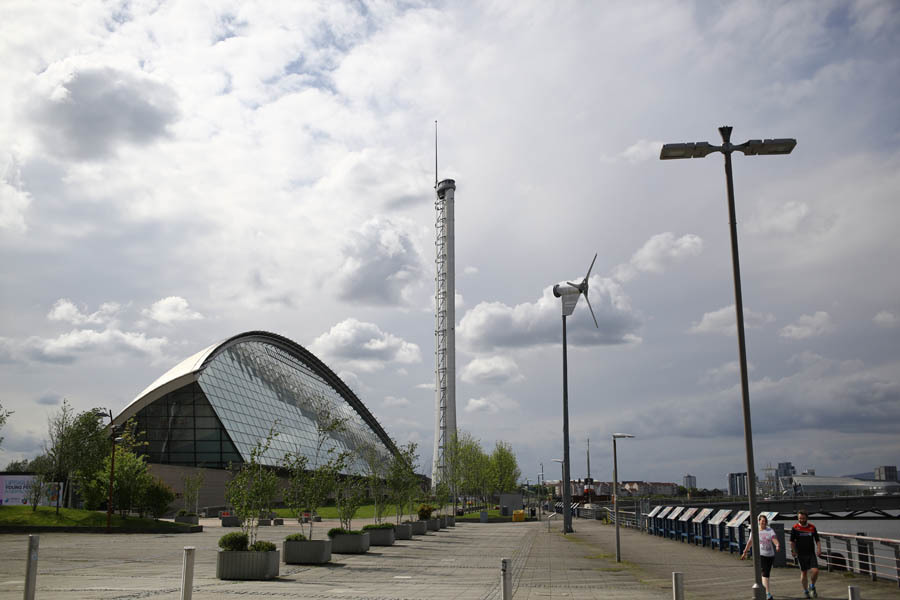
This is what the Glasgow Science Center building looks like: even the lanterns are near solar cells

')
We went to the authors of "Fixico" and said - let's license. Next is the standard product path. The main question was what experiments to take for six-year-olds. And here we had the experience of children's sections in scientific centers in different cities. I have already told you about Cape Town, so now I would like to show the excellent Glasgow Science Center and tell you what and how it affected the future game.
In general, let's start the tour. Welcome to Glasgow.
Attention, traffic . Under the cut a lot of pictures.
The traditional beginning is to make people confused in the trash and be delighted:
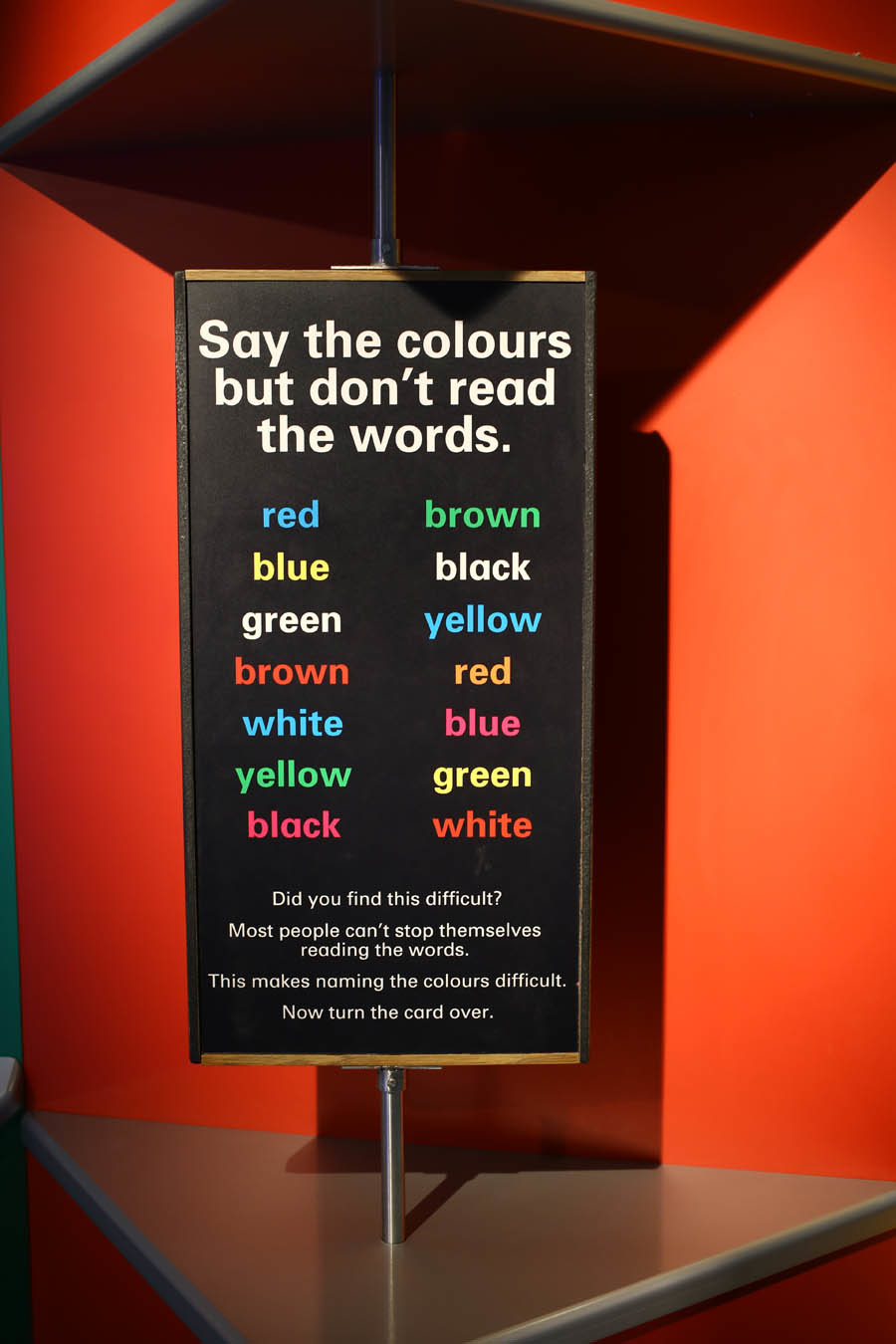
There is even such a game, there you have to do actions on certain colors, called "Kavardak" or "Confusion." But in fact, the use of cards with such inscriptions was designed to search for spies. For example, if you go through them in Chinese, the inscriptions will not affect you in any way. And if in Russian, the speed of the search will slow down, and the fact that you know Russian will be difficult to hide. So the board game was quite tough in the middle of the last century. It was kept secret - because after 3-4 hours of training, you can learn to abstract from the language.
Next - a game with vibration:

Here the red disk vibrates (the radio is on the bottom, and the sound is output to the disk). It is barely audible. If you cover it with different dishes, the dishes begin to speak in the voice of the announcer. Excellent experience in the study of sound, we repeat at home in this form:
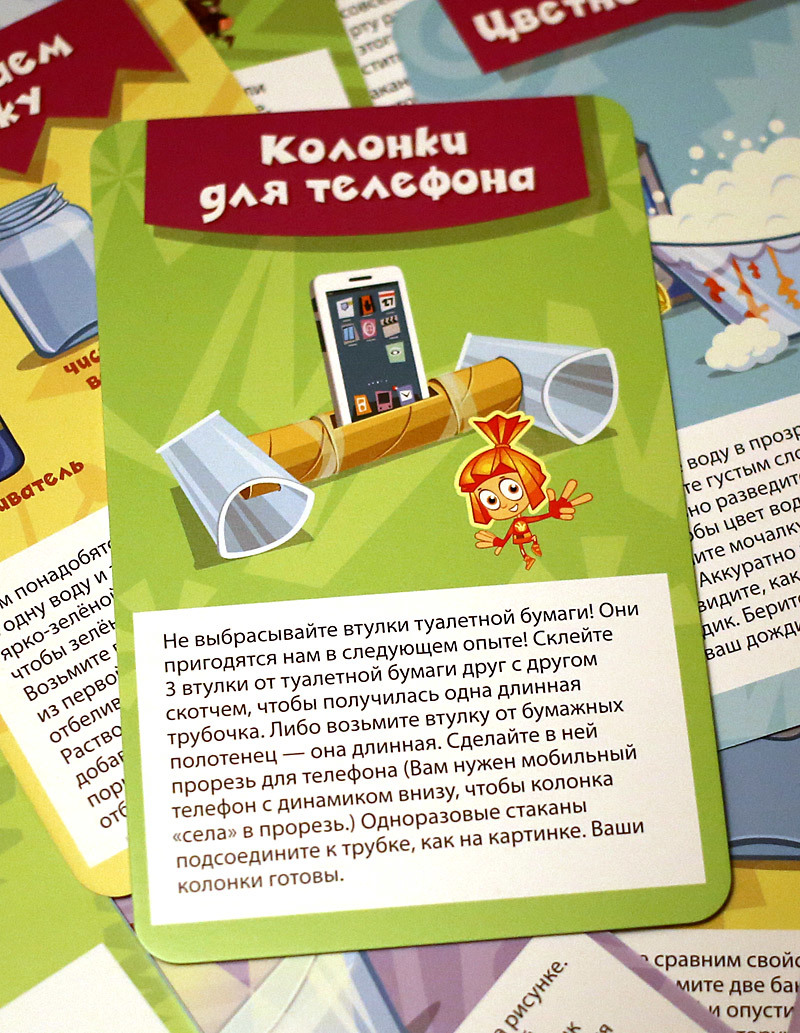
Just in case: here and below in the photo I use the prototype of the game, not the combat edition - the difference is that the corrector and a couple of minor changes were made after this iteration.
Next to the traditional entertainment of each science center are parabolic plates for whisper transmission:
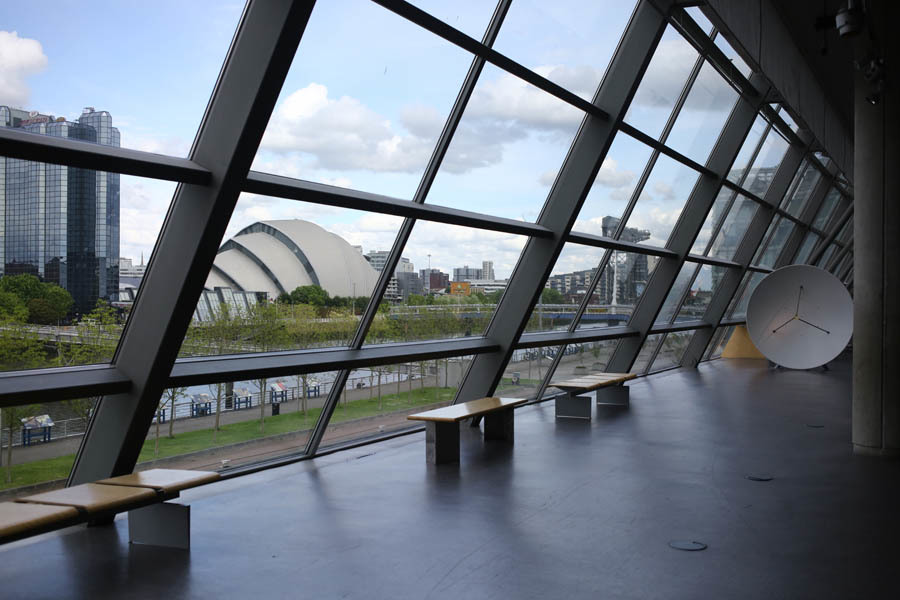
Traditional optical illusions built on the abilities of the brain to use standard patterns:

A similar principle does not allow us to recognize red peaks in the "usual" deck, by the way.
Again, the usual huge whirlpool in the section, which can be organized independently. Considering that sailing through their own Scottish Straits Jura allowed to see dozens of such rather large whirlpools, hydrodynamics is a thing directly connected with life on the islands.
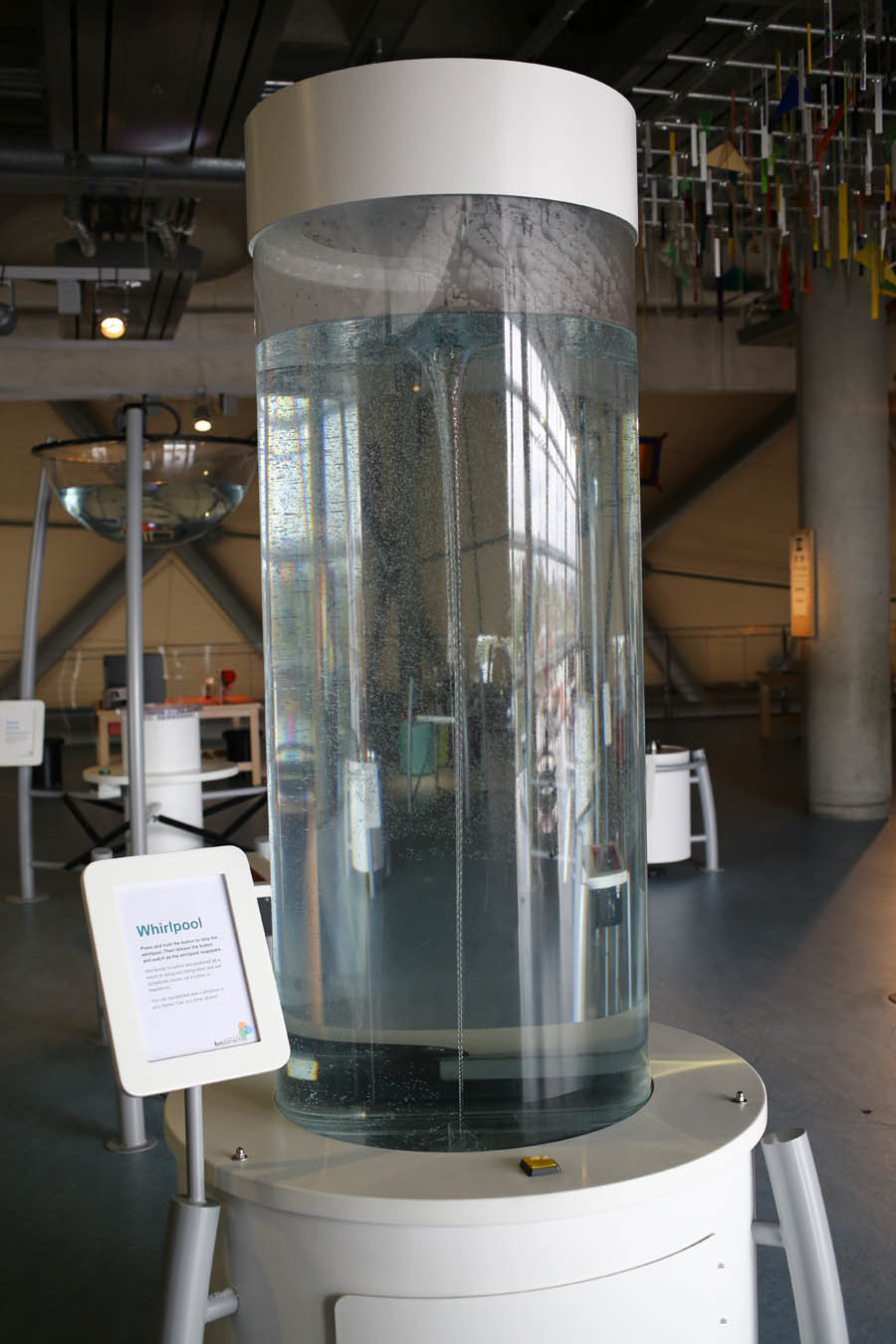
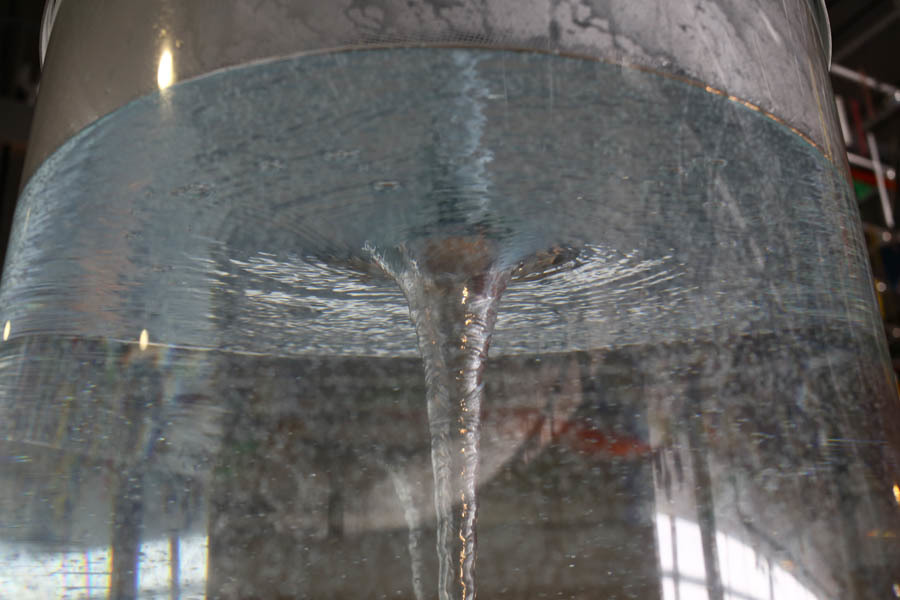
Here in “Fixikov” this came in the form of a simple experiment with bottles:
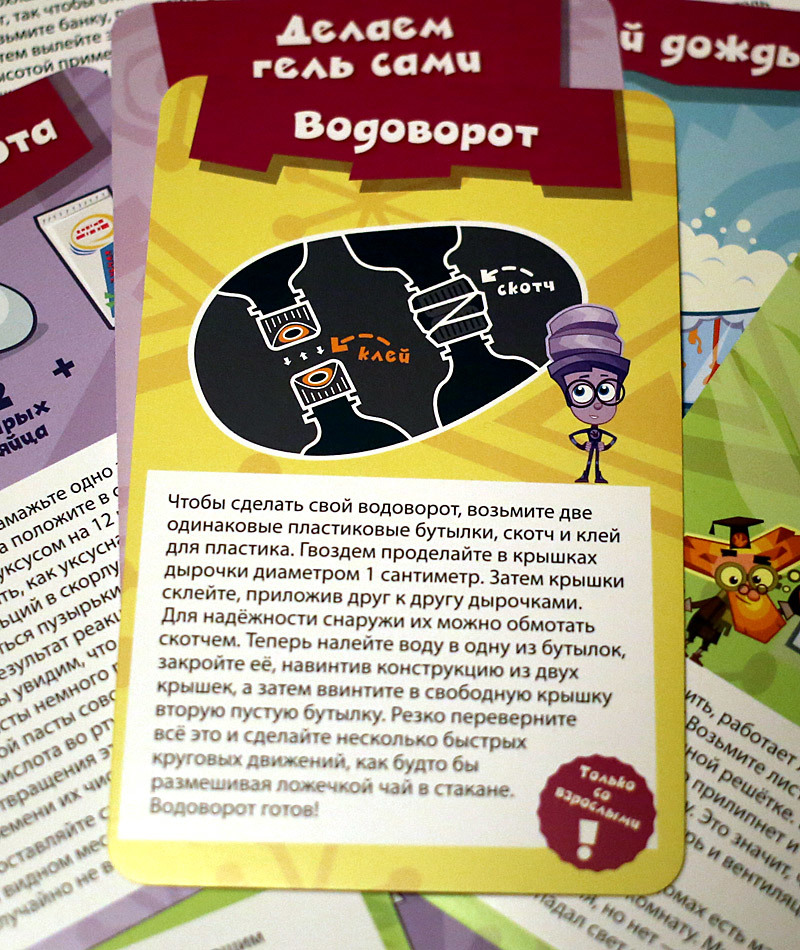
In the same place - experiments with liquids, for example, “curve water”, it is also a paraboloid in a rotating canister:
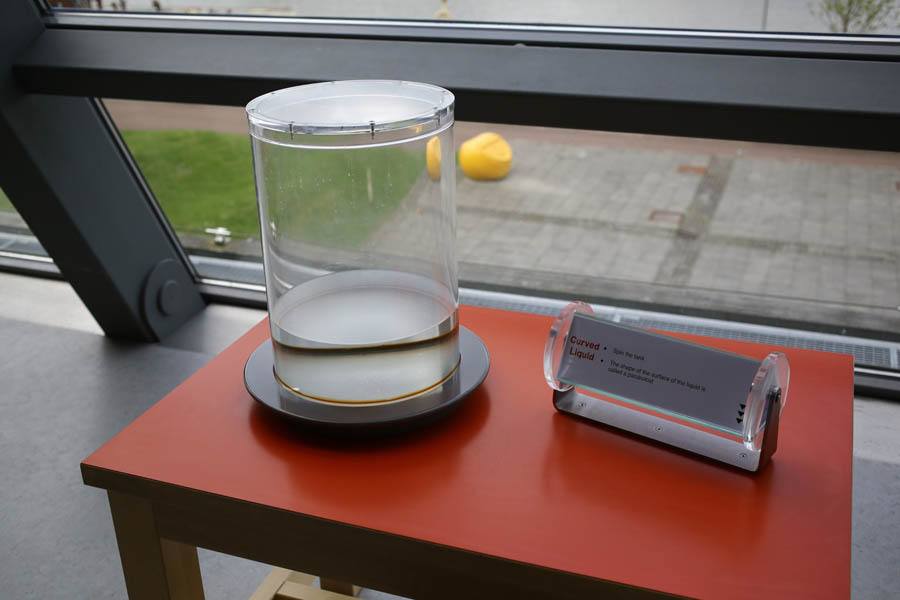
We included in the set a slightly different thing that met in South Africa:
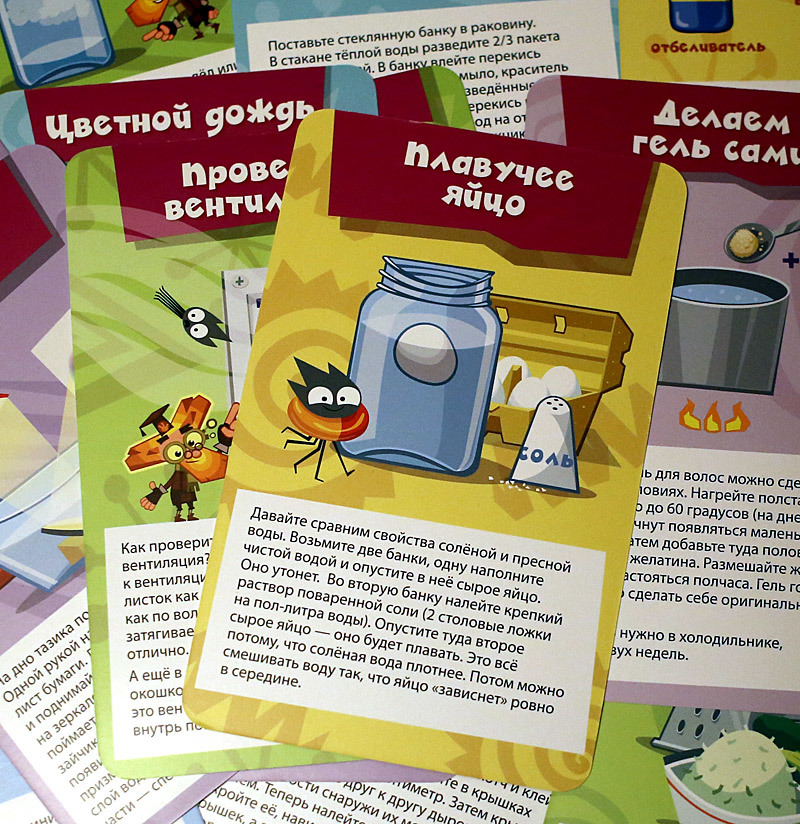
Well, the traditional Soviet experience, which is found in almost every textbook:
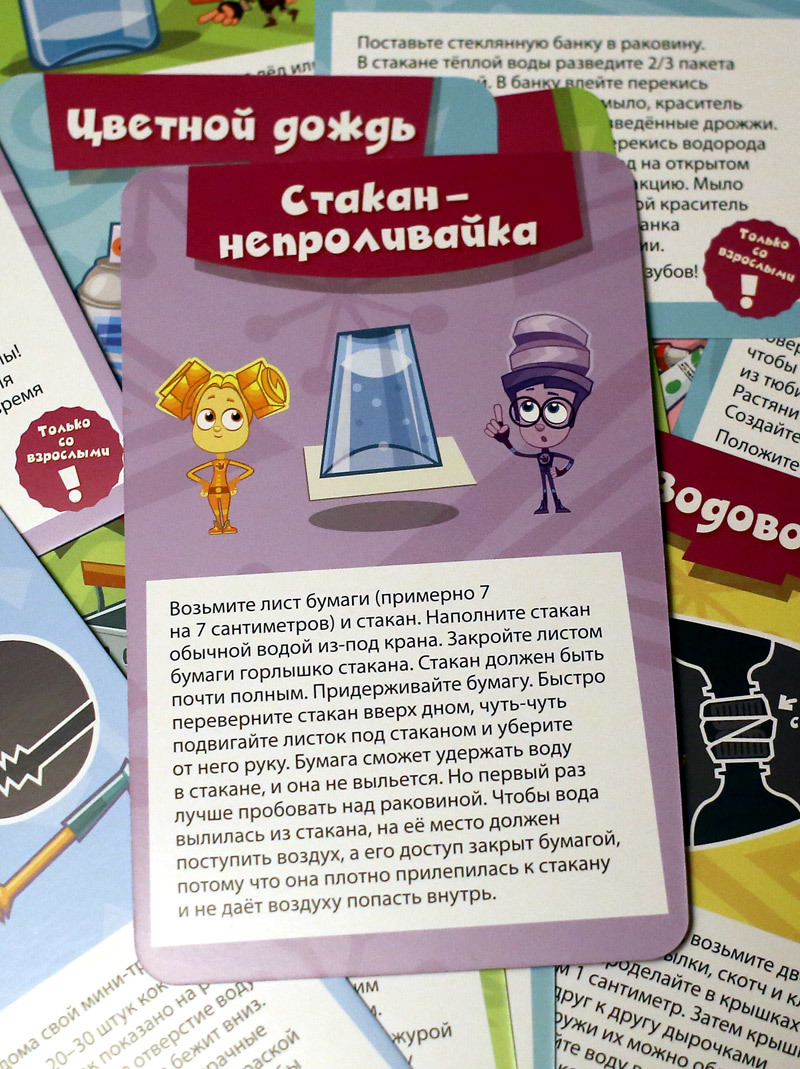
We go further on the scientific center. Here is an instruction how to charge the phone from a person:
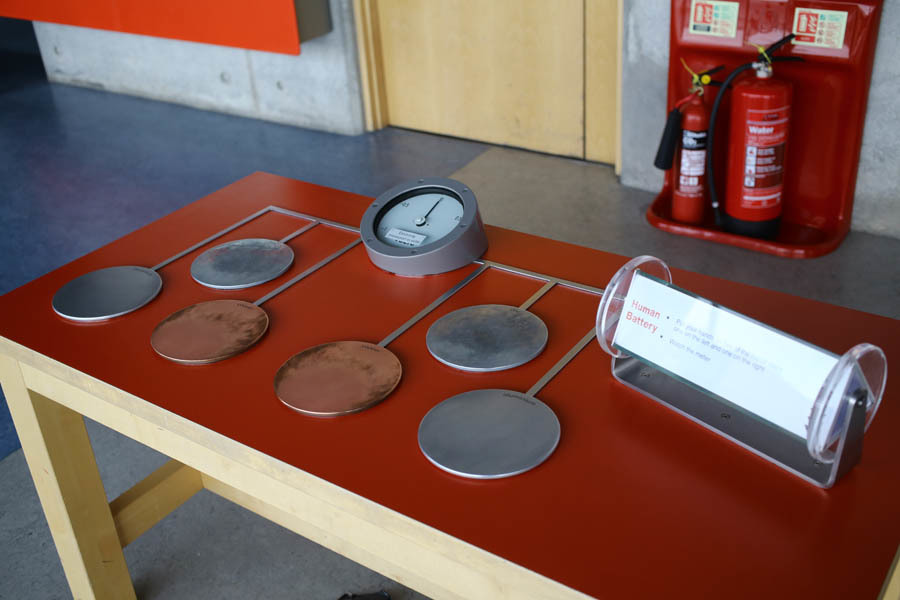
In our case, electricity is still for older children, at 6-8 years early, so we don’t include them in the kits.
A triangle, the water through which falls into any of the slots, if you twist the circle. UPD: Pentoxide suggests that this is a physical approach to the Pythagorean theorem.

But the mockery of children is better. The task is to put the balls on the side positions:

When I was departing, grandfather (judging by the absence of a kilt - Irishman), began to play. In this room, I was still 35 minutes, and all this time he was picking and shaking these balls. Irish grandfathers - very stubborn people.
Next - traditional geometric games for very smart or very strong:
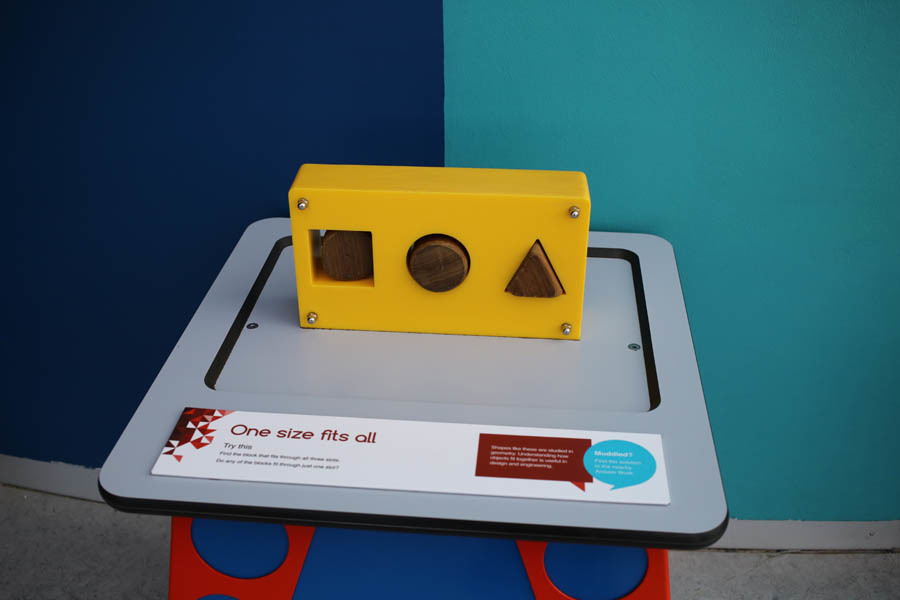
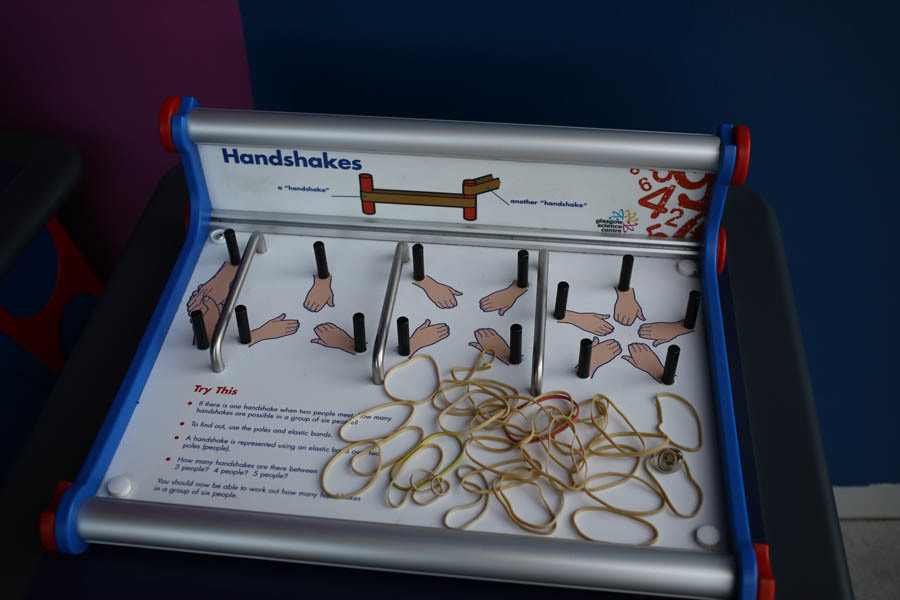
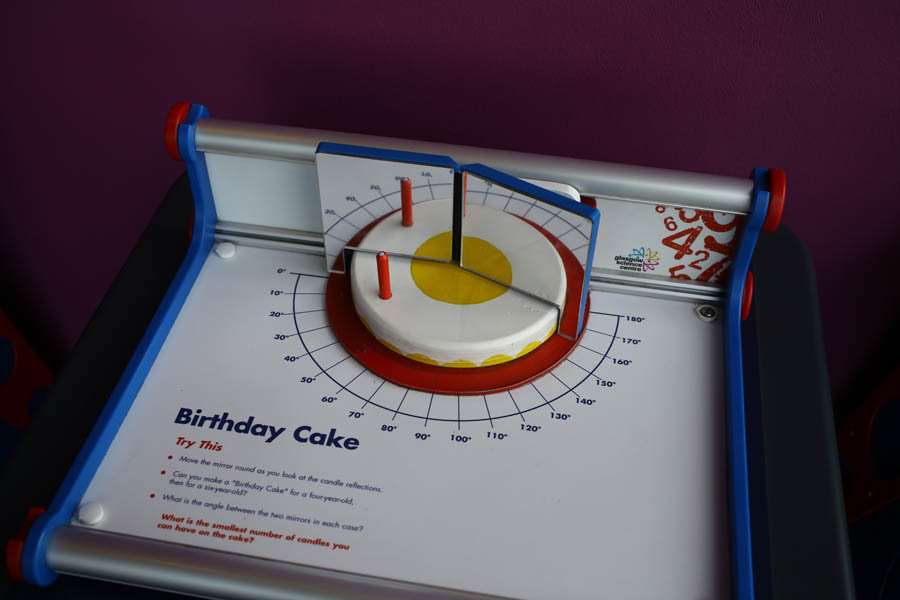
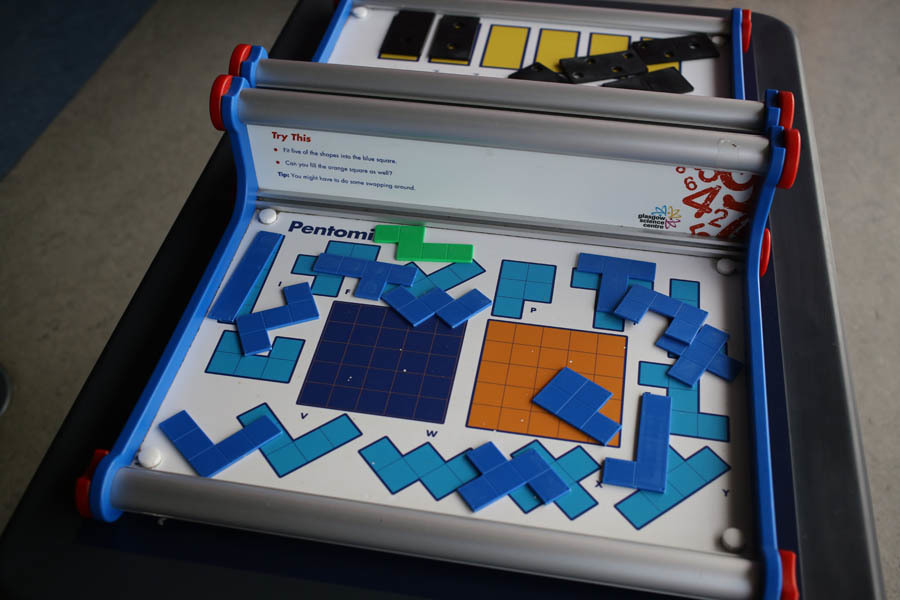
Tablets like “ IQ-Twist ” also teach such things, and Tangram or Ubongo for older children works fine. The picture above with “Tetris” is just the mechanic Ubongo, who was invented back in Africa - the mechanics of testing the leader of the tribe for intelligence.
But the Scots are prepared for the harsh logistics, are taught to pack balls denser:
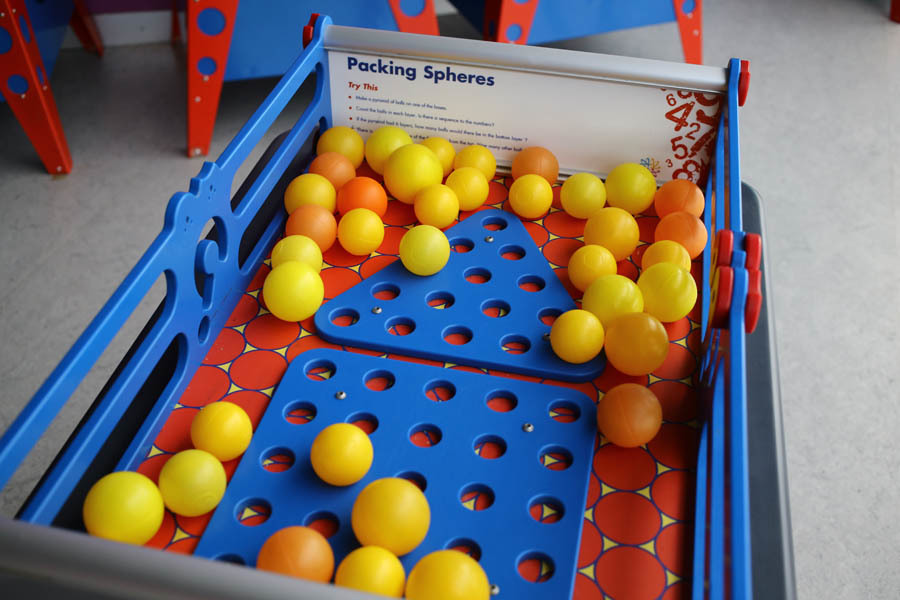
And the good old game "Vira":

The geometric hall looks like this: complex puzzles alternate with stands, where you can see something visually:

Now let's go to the second hall, it is already devoted to the achievements of science. On the way in the elevator we are waiting for a very cool advertisement for a local cafe:
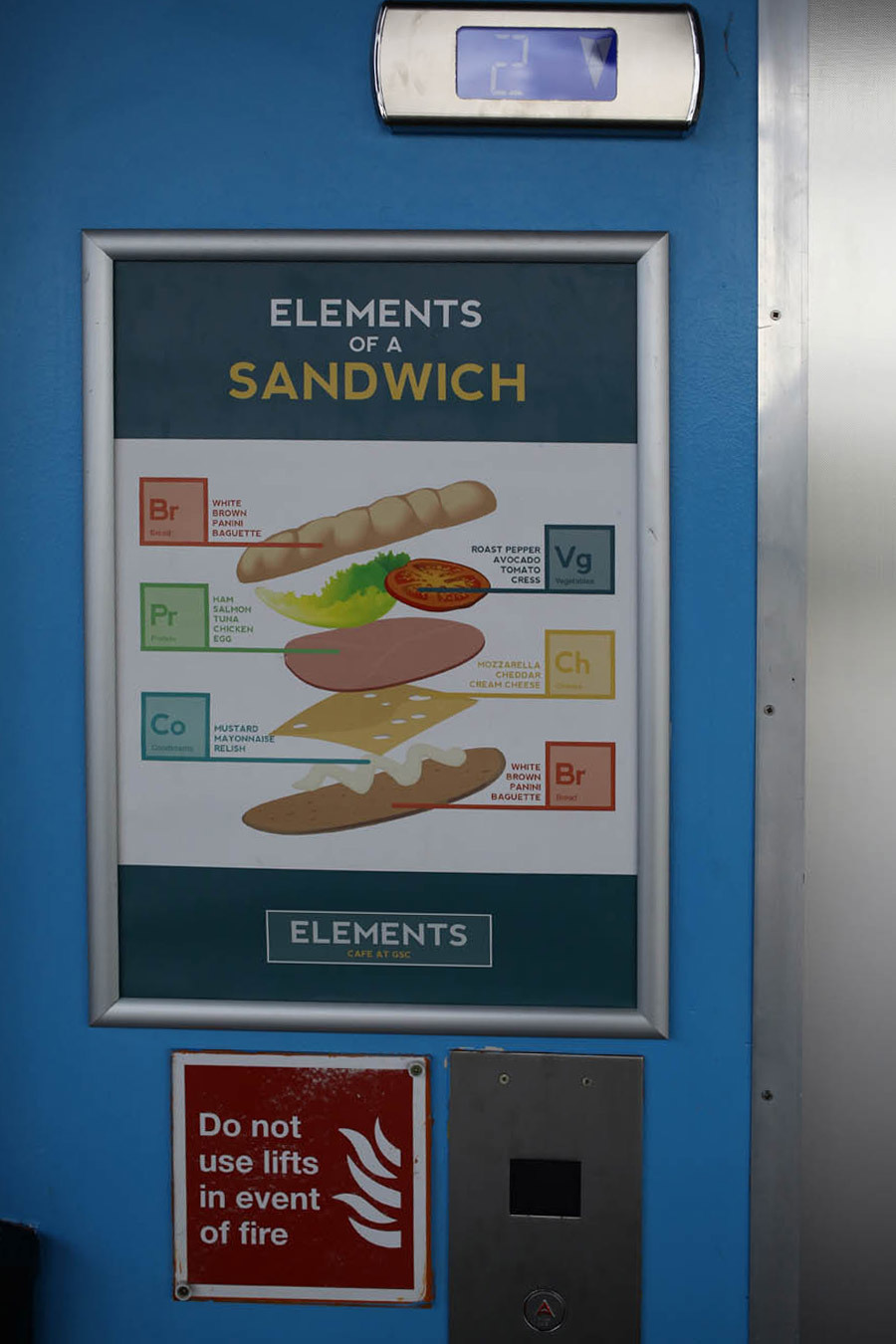
And the excellent slogan "Played the day - learned for life":

Just want to bring it to half of our children's nastolok.
But let's look more at the floor. It starts with the exhibition of the achievements of medicine Deus Ex:

In the Commonwealth, by the way, unlike us, they understand that artificial limbs do not necessarily have to look like our original limbs by default. For example, an improved foot:
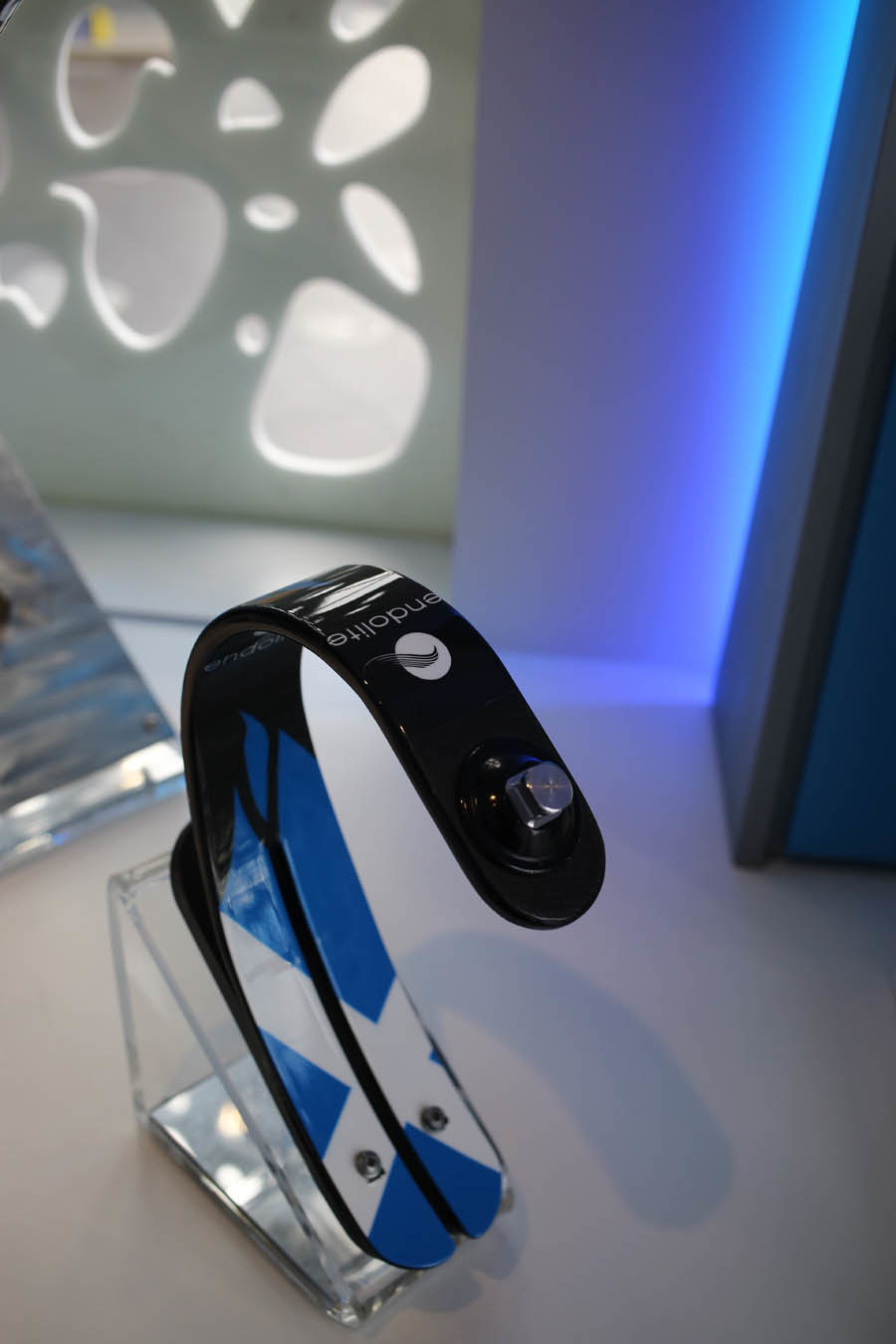
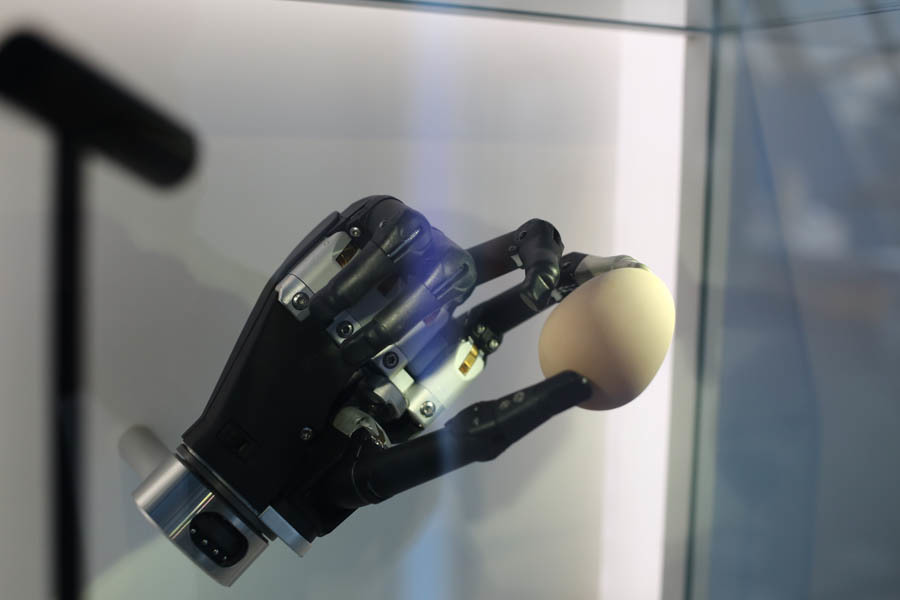
Traditional children's game "Get the liver":

Analogue - the board game "Operation"
The doors are decorated with various informational posters. Even in the toilet there is a special one (which pleases - extremely adequately and without constraint):
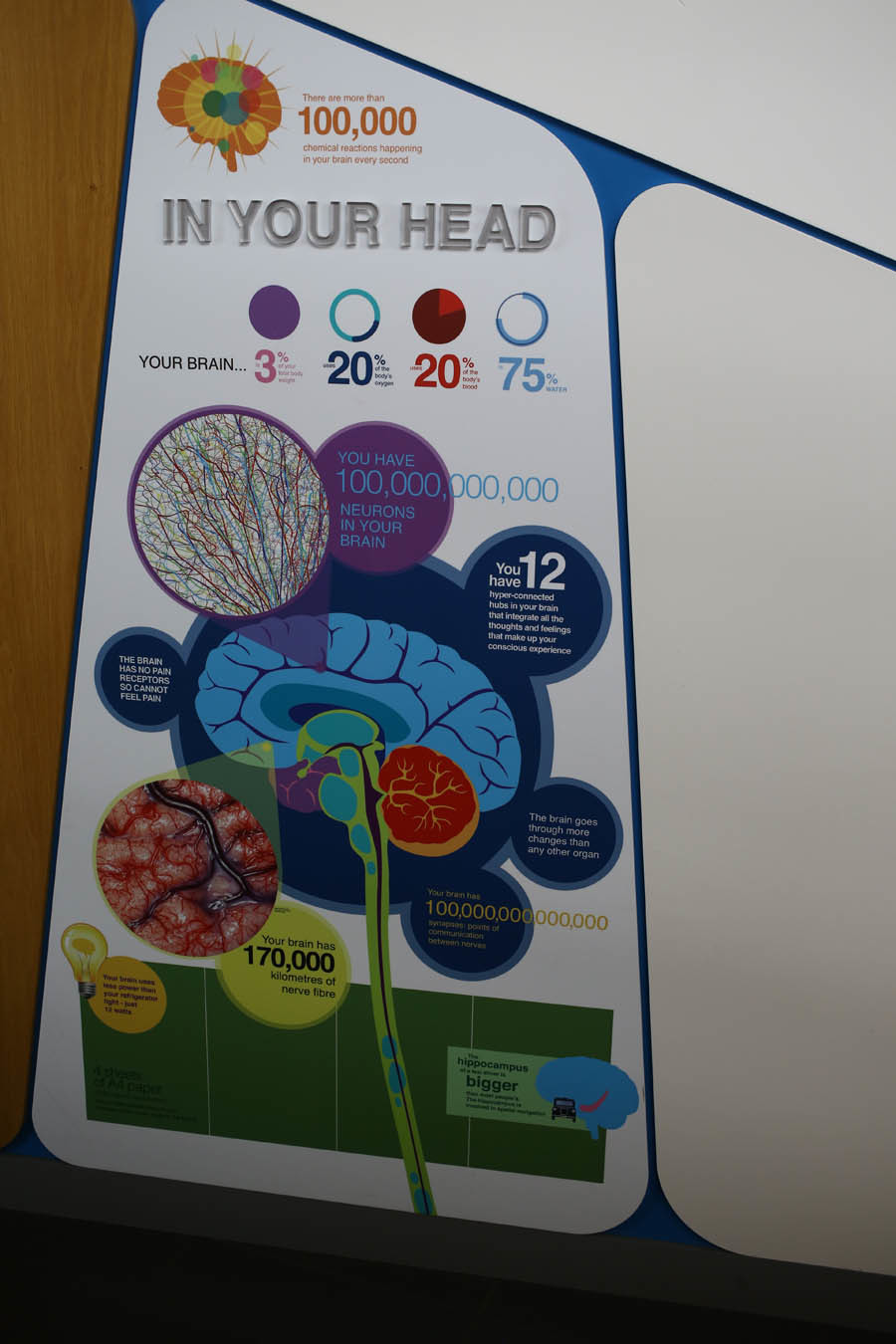
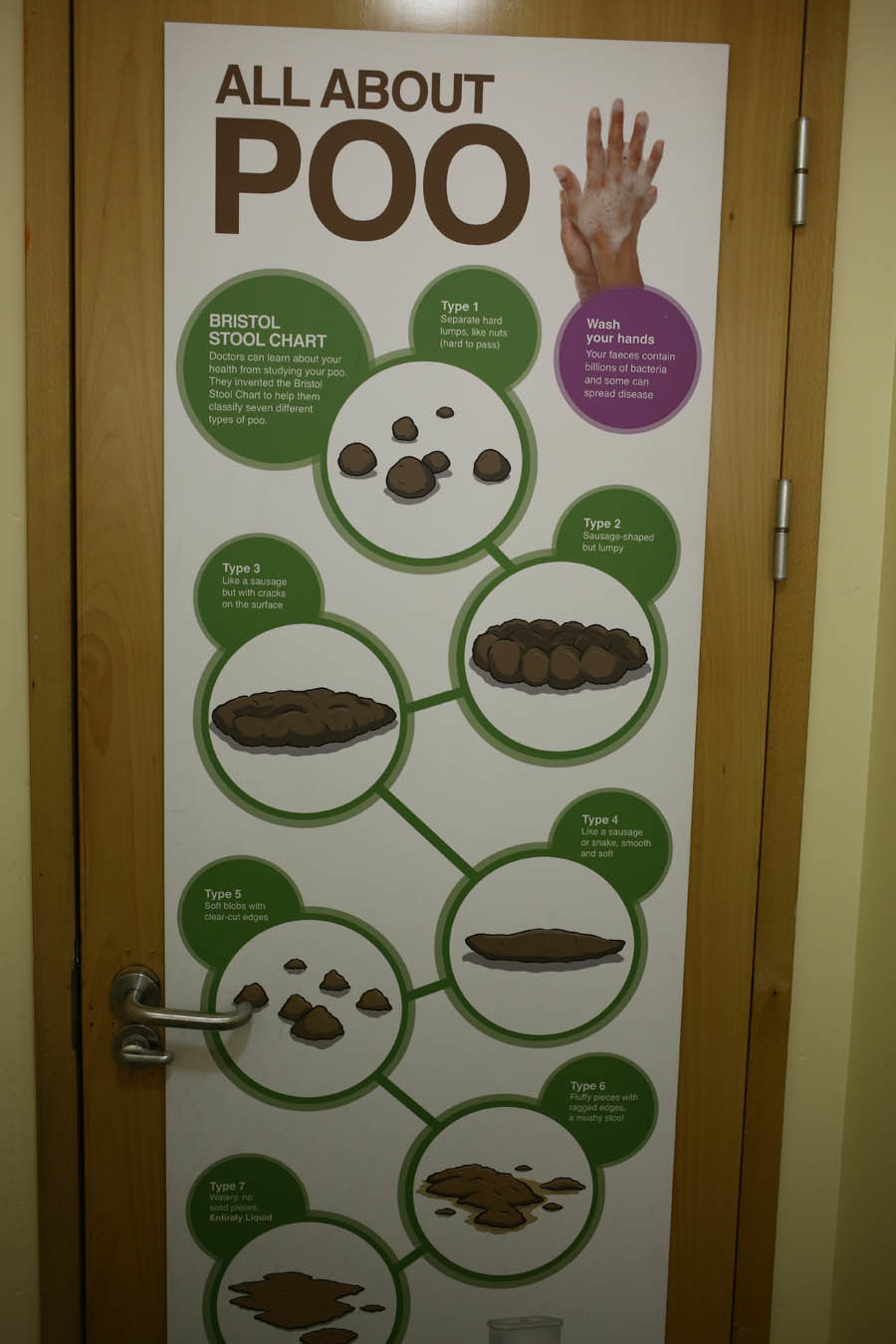
Next is the workshop room. When there are no master classes here, different games are launched on the stands, ranging from “collect the DNA of a flatfish tomato” and ending with all sorts of operations:

Here is a surgeon simulator:
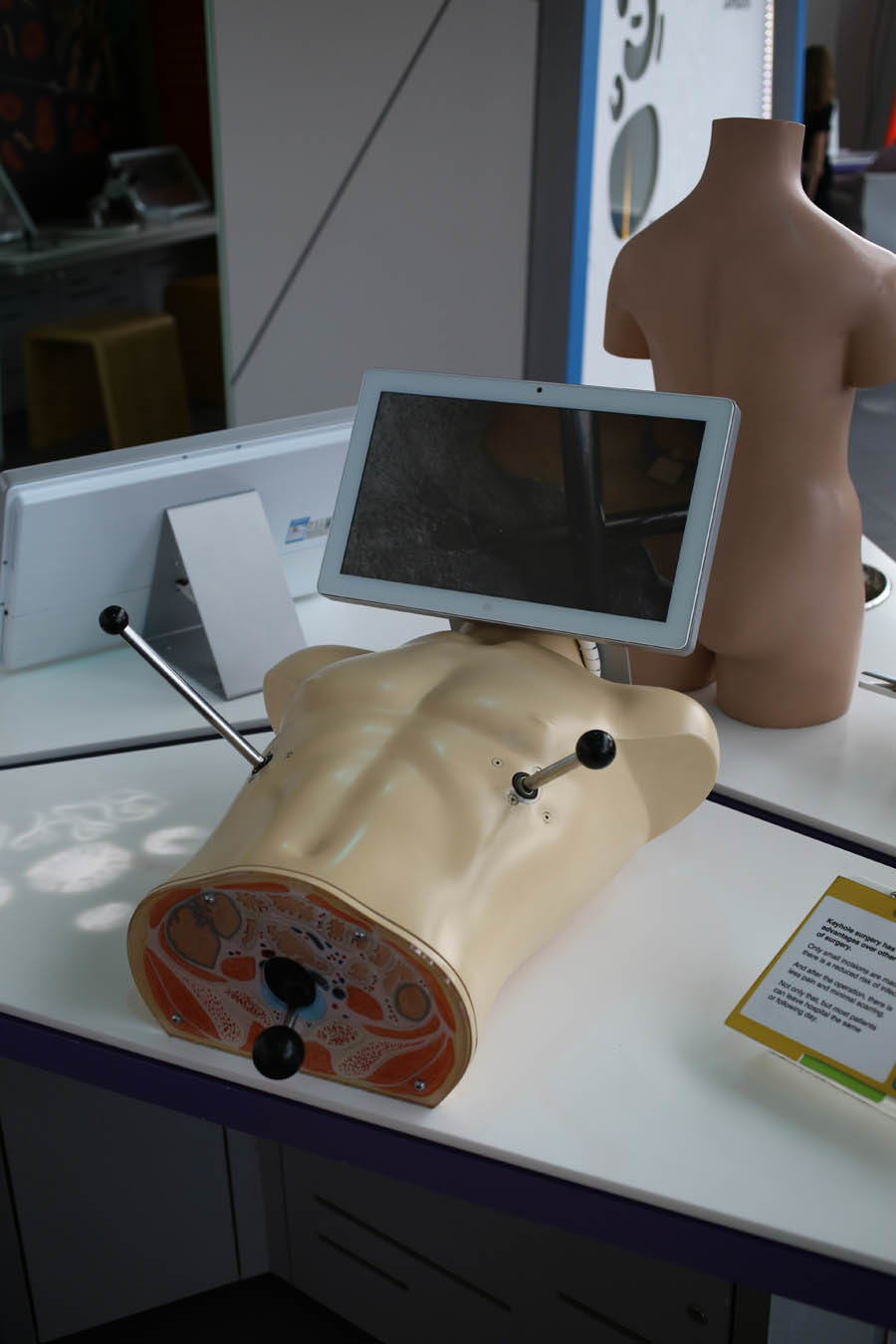
You can play in a microbiologist:
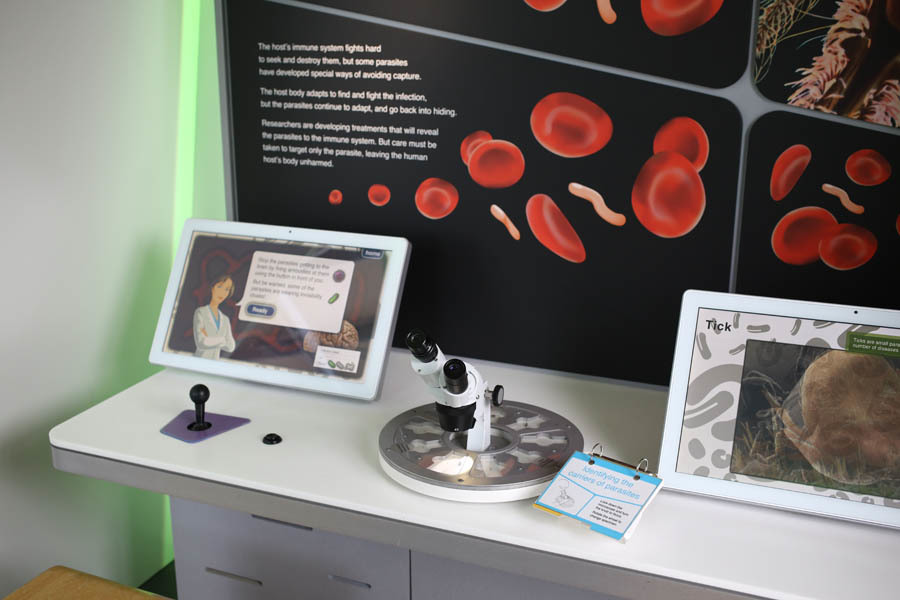
Next - look at the augmented circulatory system:

Hmm ...

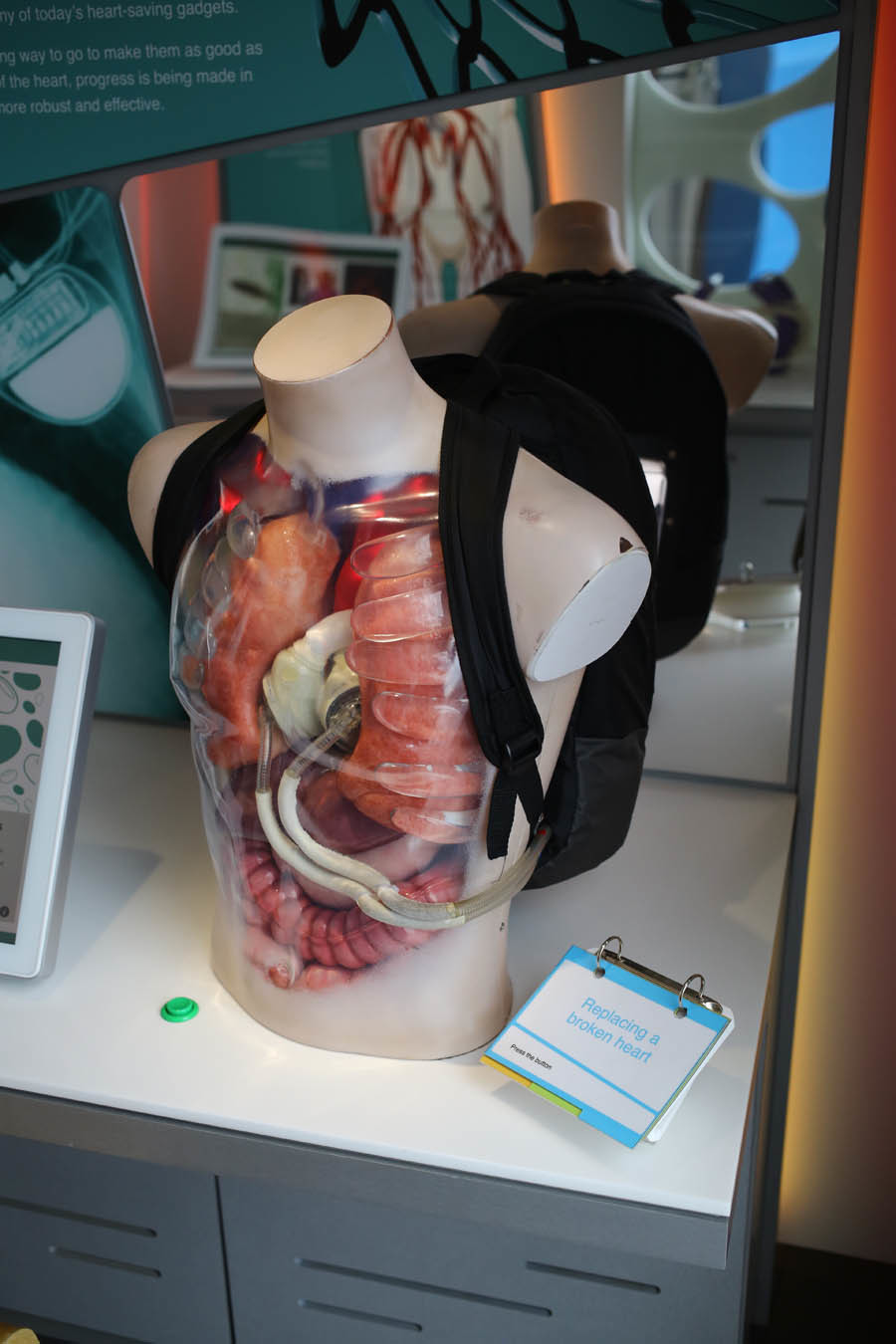
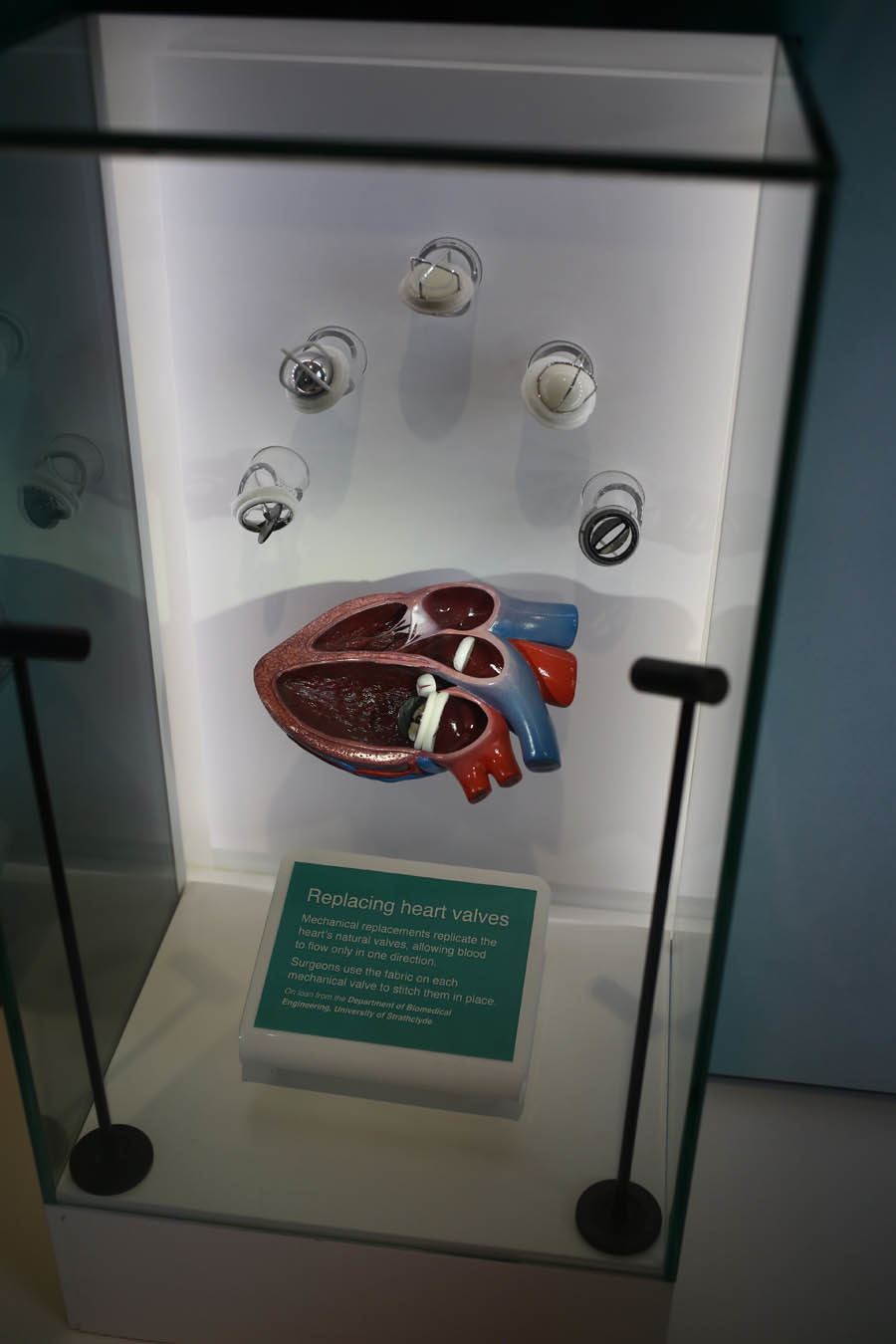
Playing statistics (in general, these things are very much loved in the country - there are even such things at the distillery, you just have to stick not a needle, but the flag of your country) - a great proof that a huge bunch of people are interested in science:

Leave a pixel imprint of your body in moving tubes:
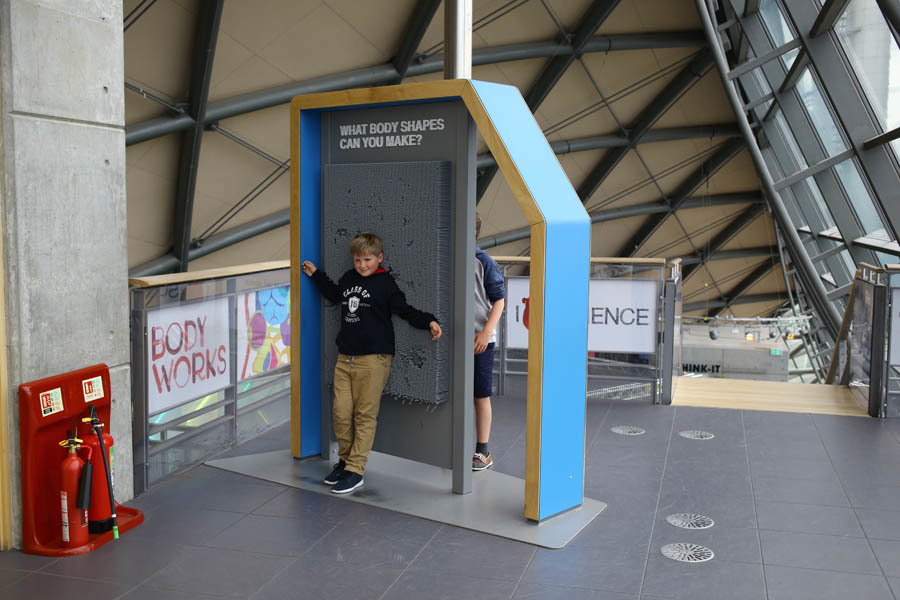
Go ahead, the next room is a mechanic:
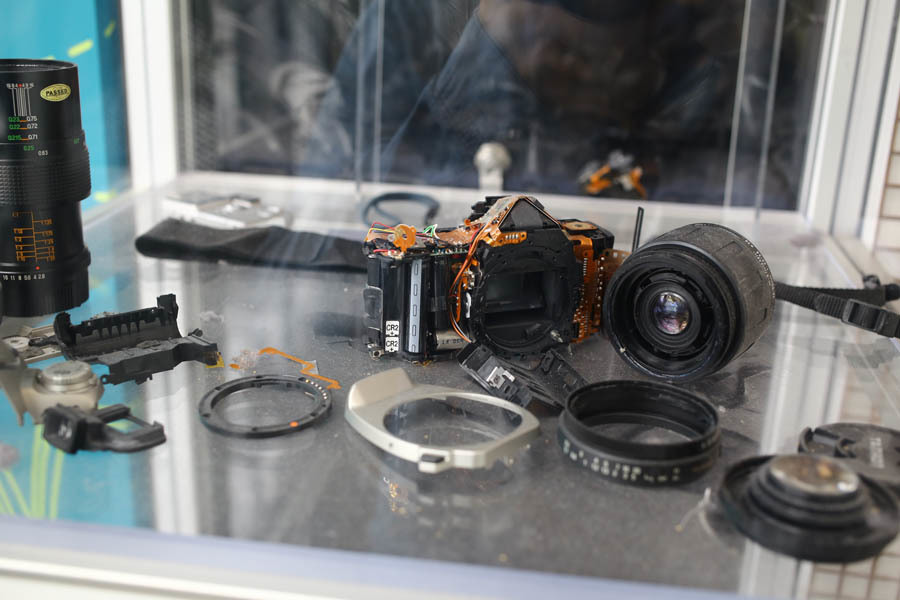
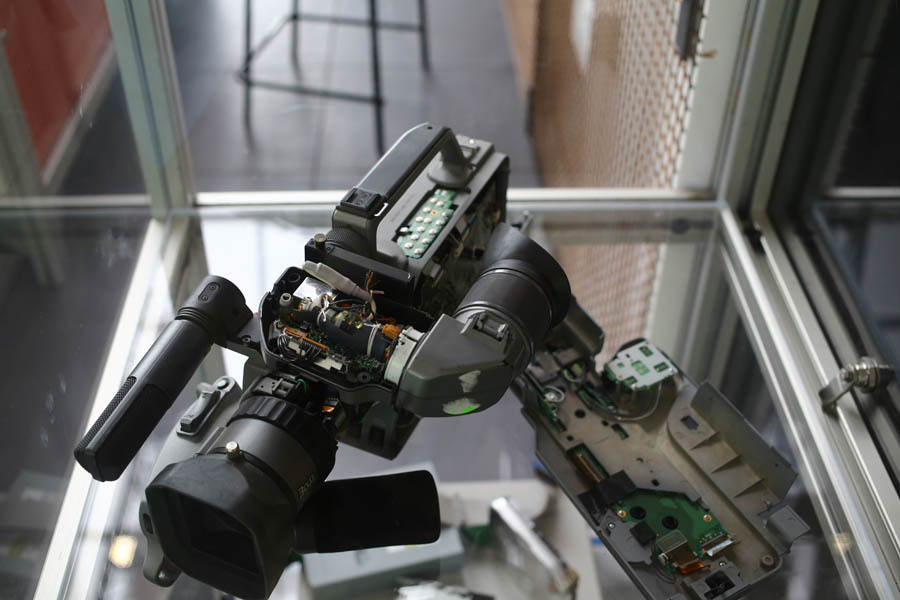

It should be interesting to open objects with fixings, so these are the ideas:
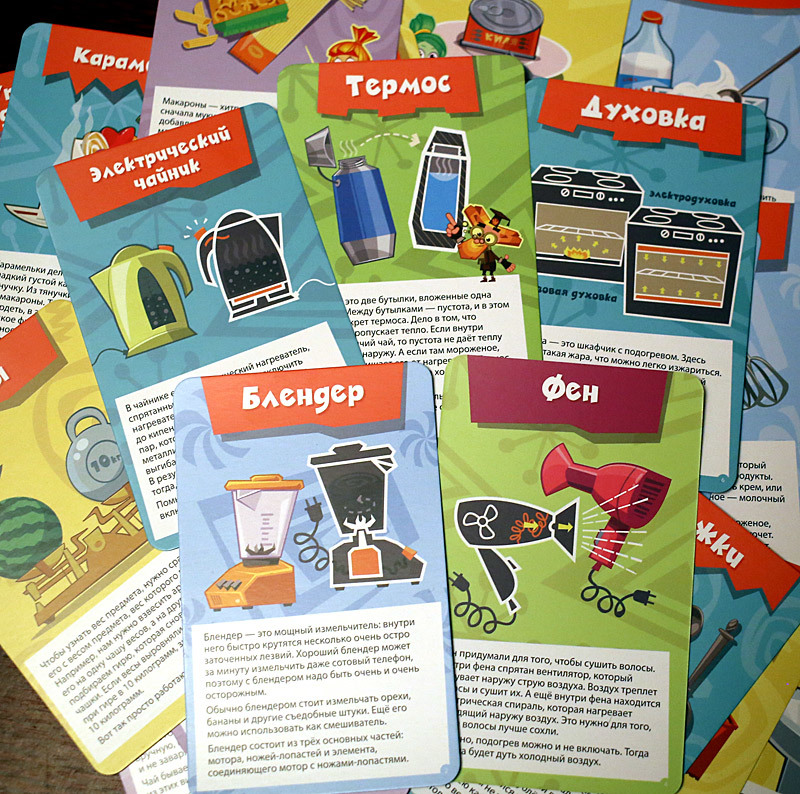
Here you can start the generation of electricity by hand:

Next - to play the race on the same thing, the faster you spin - the faster your machine drives (adults are wildly dragged):

For the lost fathers - the game "One Day of the Minister of Energy" about maneuvering capacities. In Scotland, this is important, they are trying to switch to renewable sources as much as possible:
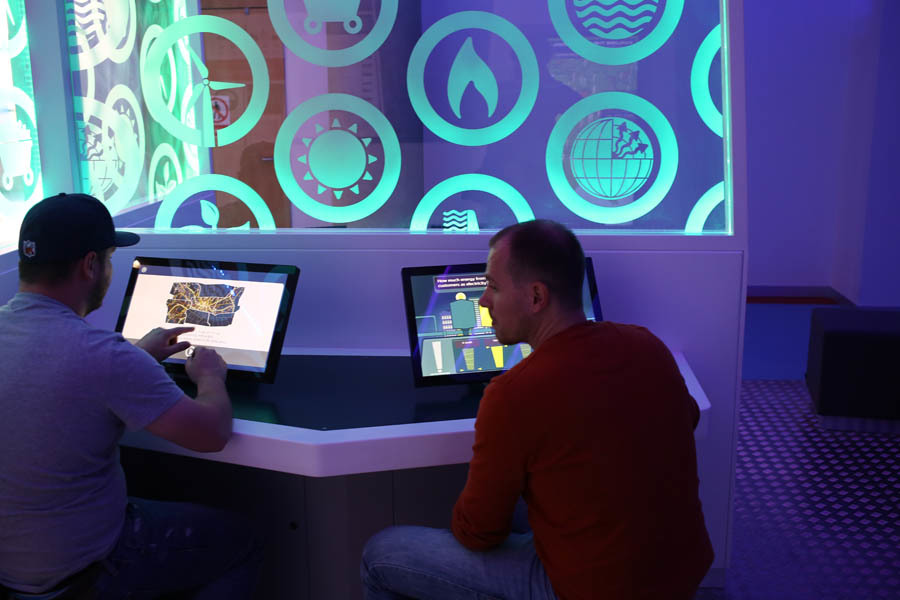
Water wheel:
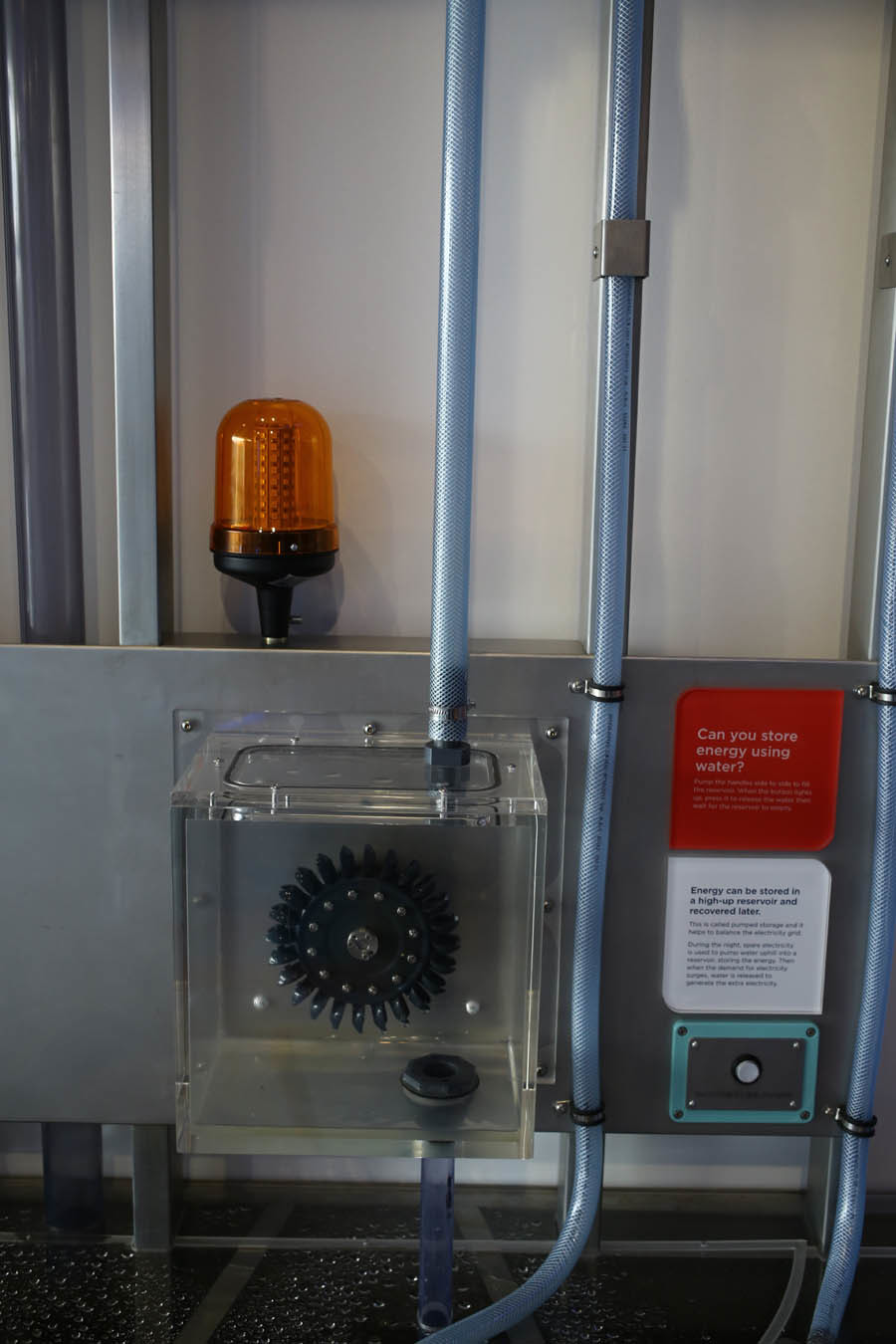
Well, yes, we have this at home, just not for generation:
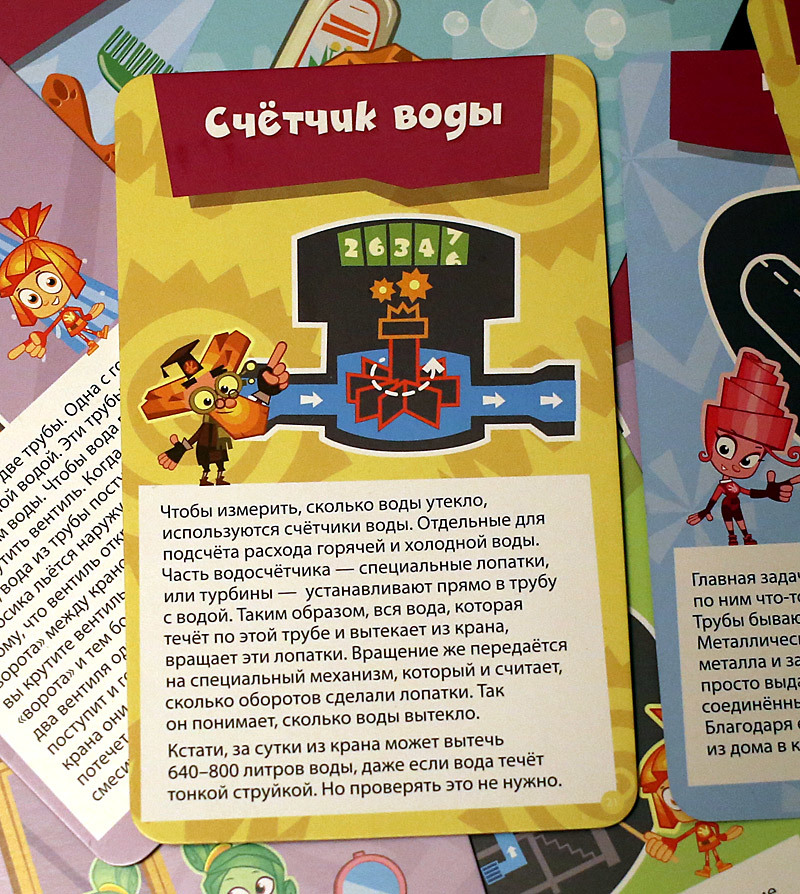
A very interesting generator that uses wave energy:
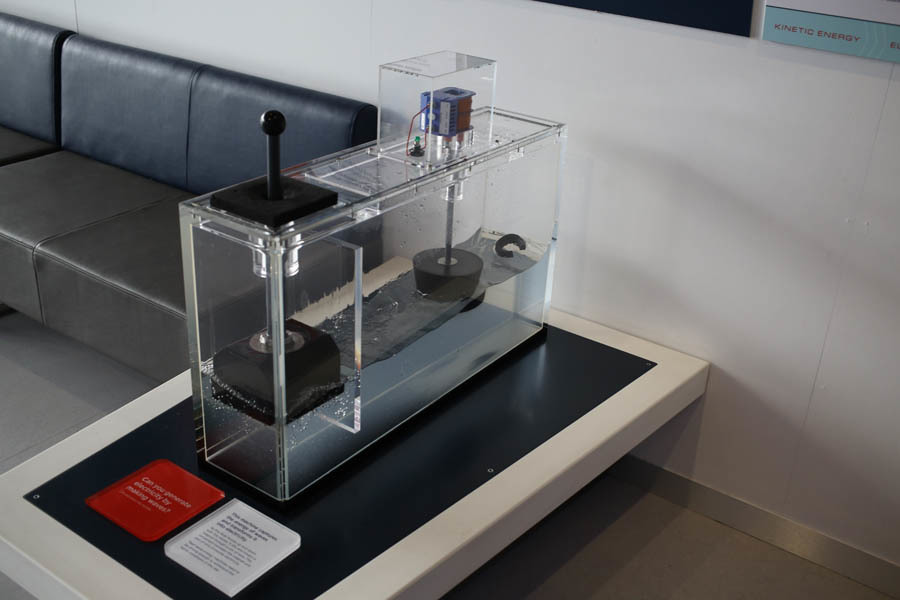
Somewhere I saw a similar thing at home. Ah, exactly:

Electricity play:
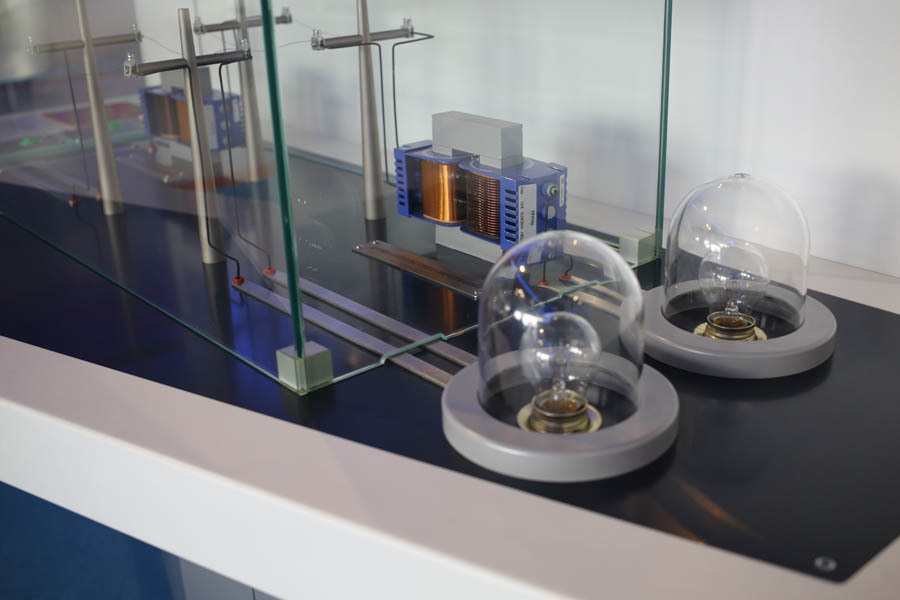
Geothermal:

A fountain that shows the current level of solar radiation (it is powered by a battery on the outer wall of the building):
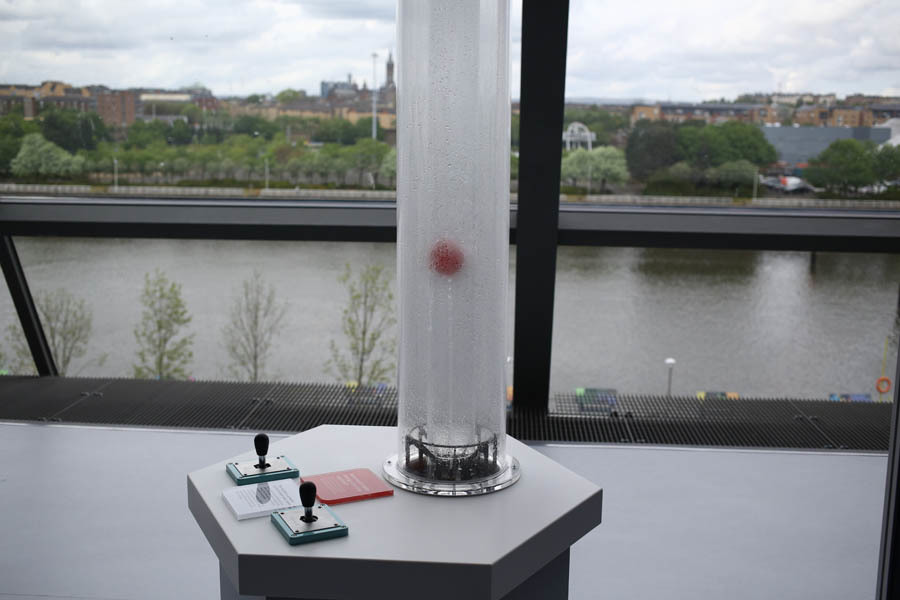
Here you can play the inclination of the solar panels to determine the maximum energy. Very useful work for future researchers of Mars - in Moscow in the "Mars-TEFO" there is a more complex toy of the same plan:
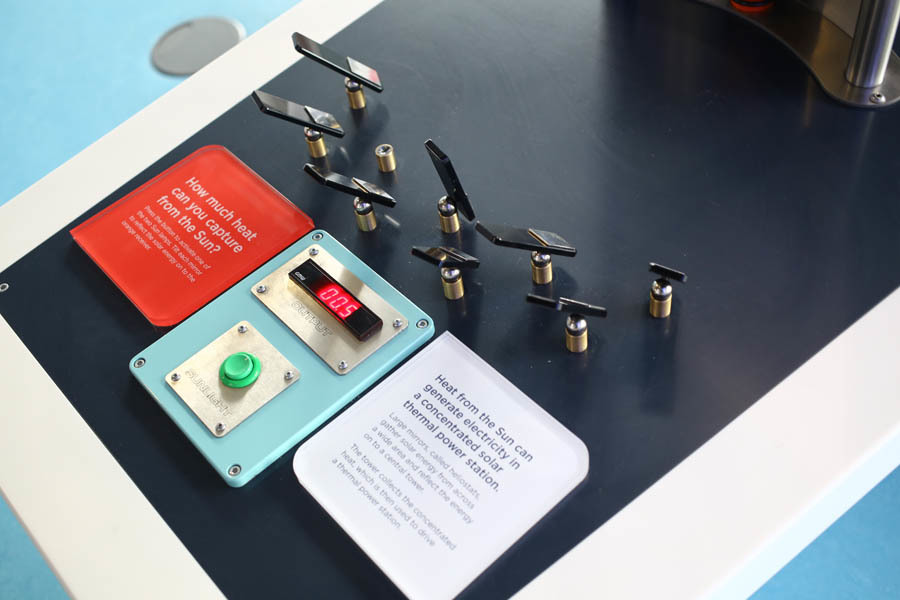
The next room is everything for smaller children. For the smallest - tehnoskazki:
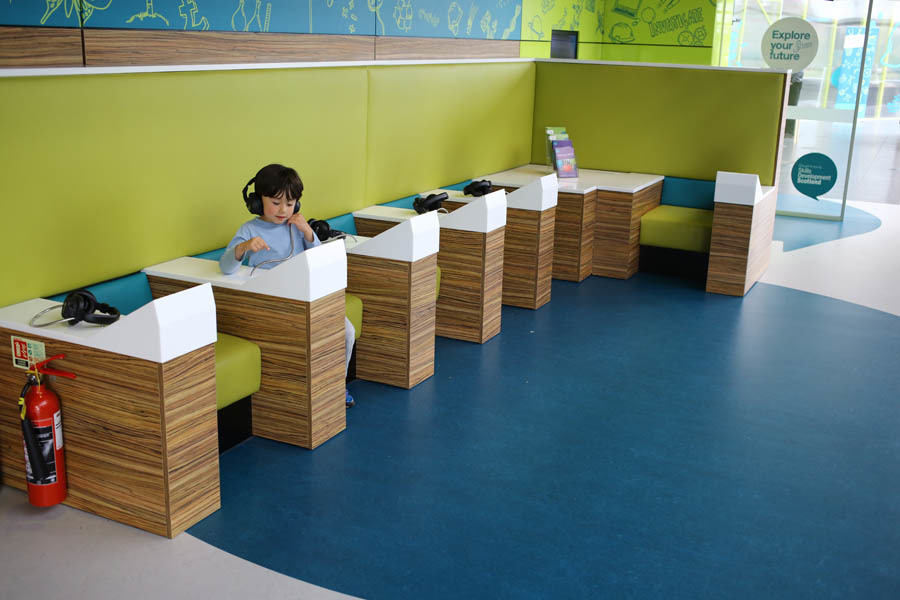
Lab geek for photographing in it:
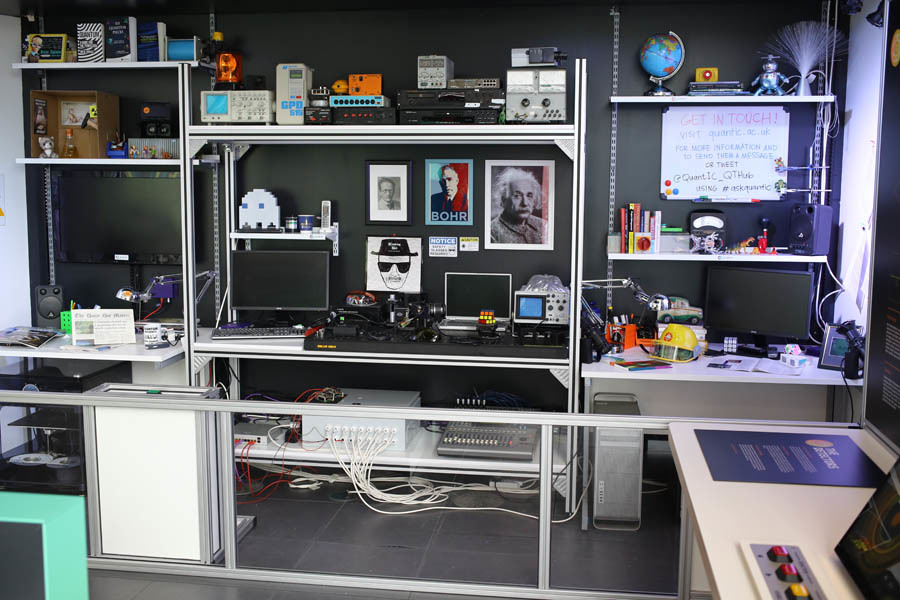
The laser stand - you catch up with water vapor, and the rays of the lasers become visible, you need to bring them to the desired point:

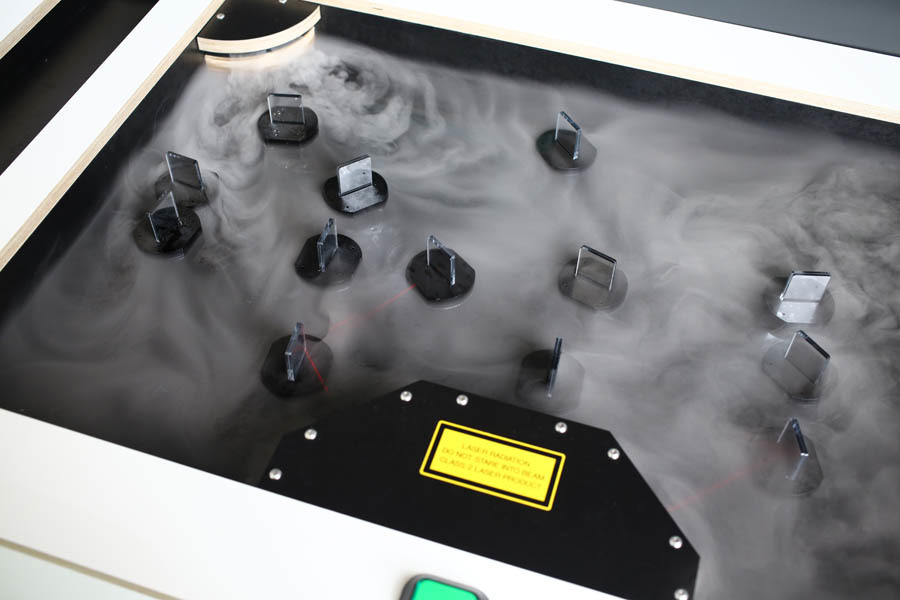
In the game with the light did not manage to remove the rainbow, but to repeat it at home is very, very simple. I don’t even need a glass prism, everything is much simpler:
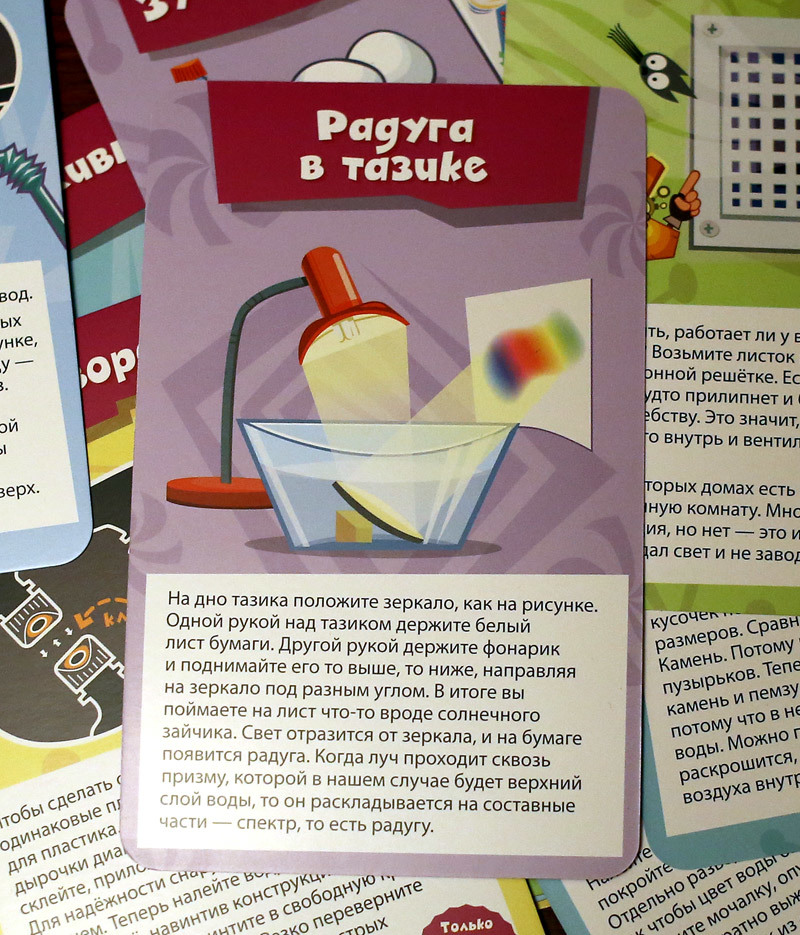
Here, in fact, the " Color Code " itself is one-to-one:
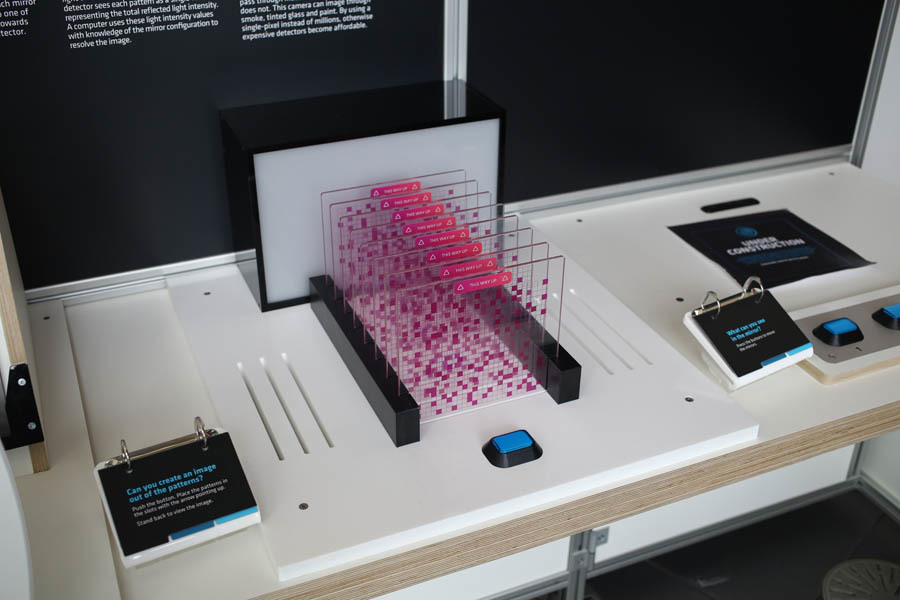
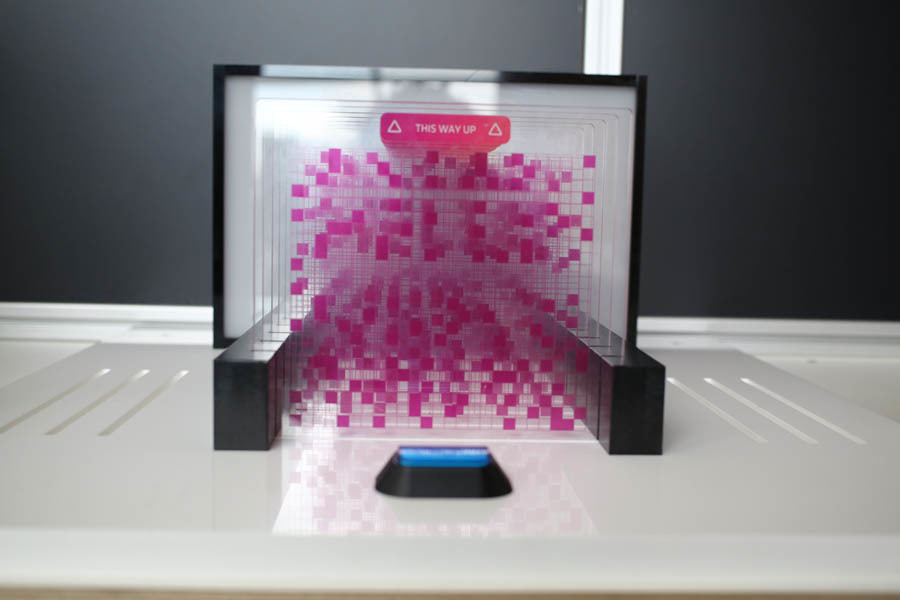
Here you can climb the bridge of a fishing vessel:
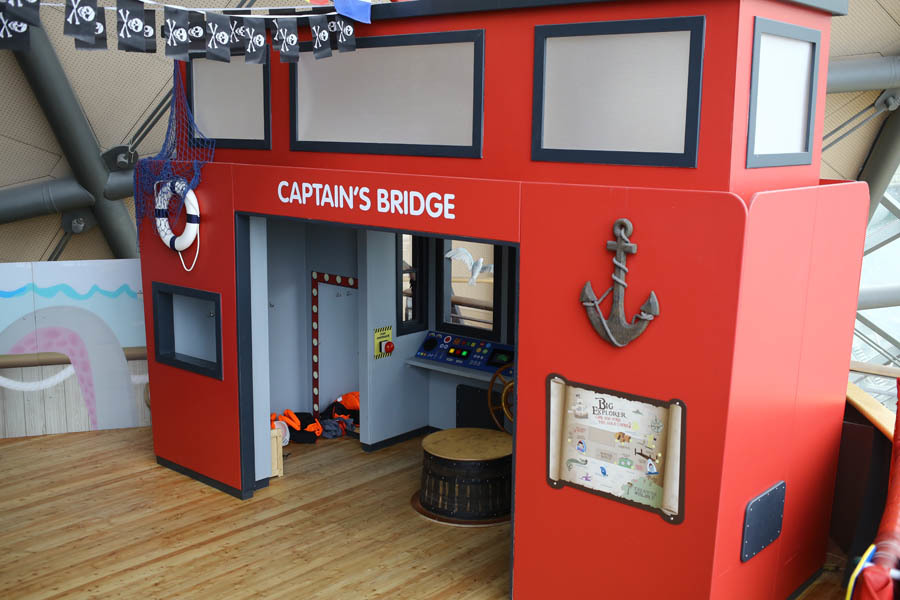
Learn to knit real sea knots:
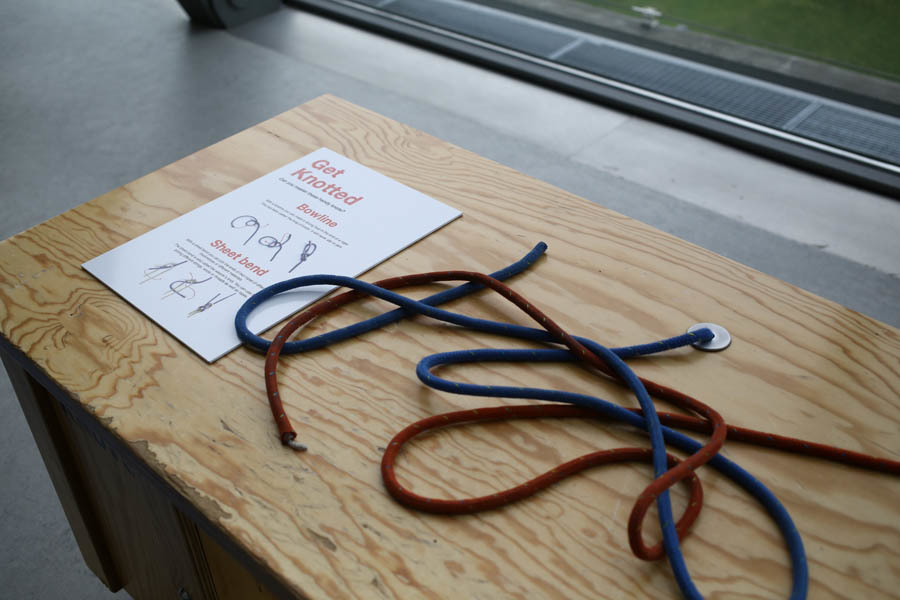
See what comes in the catch (this is also a story about the decomposition of different types of waste for adults):
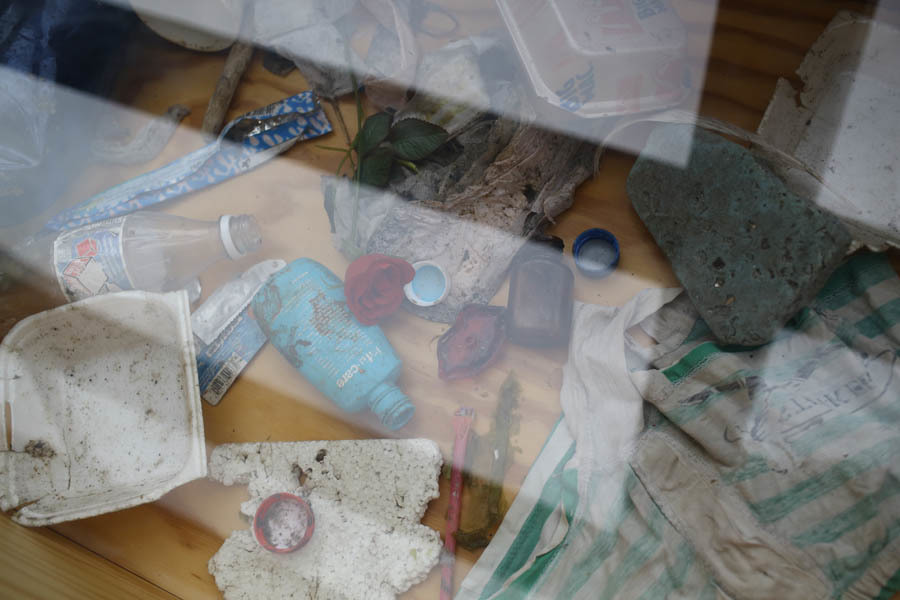
And, finally, you can go down to the cafe with fucking tables:
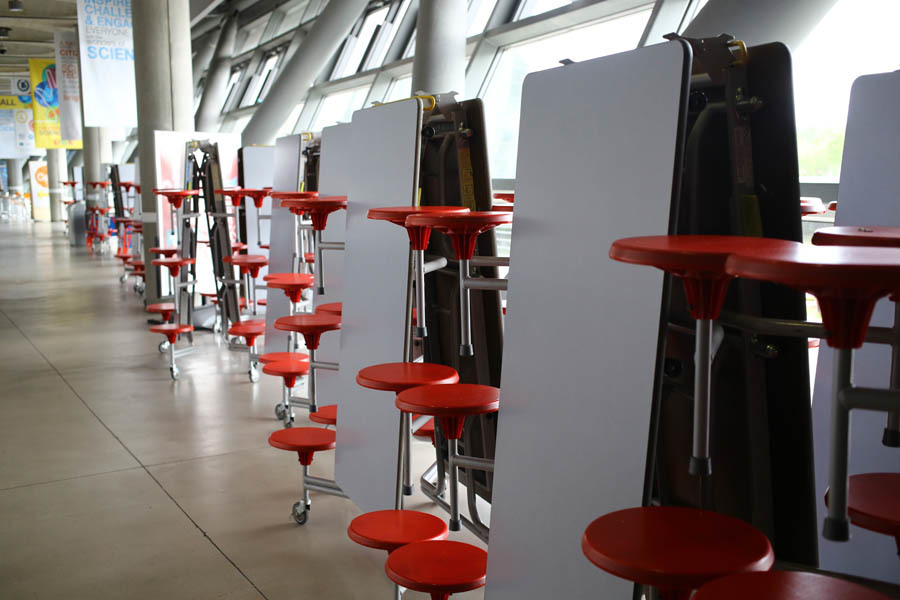
From other research centers a couple more experiments:

This is from our exhibition "Innovative Russia":

Well and further in the same vein, plus the "usual" experiments, which are recommended by old Soviet textbooks at home. In general - a complete set of any interesting pieces. Here's the kitchen , here's the bathroom .
But the Cape Town Science Center mentioned above is another post with a guided tour .
Everything. Walking through the research centers is awesome interesting, here.

This is what the Glasgow Science Center building looks like: even the lanterns are near solar cells

')
We went to the authors of "Fixico" and said - let's license. Next is the standard product path. The main question was what experiments to take for six-year-olds. And here we had the experience of children's sections in scientific centers in different cities. I have already told you about Cape Town, so now I would like to show the excellent Glasgow Science Center and tell you what and how it affected the future game.
In general, let's start the tour. Welcome to Glasgow.
Attention, traffic . Under the cut a lot of pictures.
The traditional beginning is to make people confused in the trash and be delighted:

There is even such a game, there you have to do actions on certain colors, called "Kavardak" or "Confusion." But in fact, the use of cards with such inscriptions was designed to search for spies. For example, if you go through them in Chinese, the inscriptions will not affect you in any way. And if in Russian, the speed of the search will slow down, and the fact that you know Russian will be difficult to hide. So the board game was quite tough in the middle of the last century. It was kept secret - because after 3-4 hours of training, you can learn to abstract from the language.
Next - a game with vibration:

Here the red disk vibrates (the radio is on the bottom, and the sound is output to the disk). It is barely audible. If you cover it with different dishes, the dishes begin to speak in the voice of the announcer. Excellent experience in the study of sound, we repeat at home in this form:

Just in case: here and below in the photo I use the prototype of the game, not the combat edition - the difference is that the corrector and a couple of minor changes were made after this iteration.
Next to the traditional entertainment of each science center are parabolic plates for whisper transmission:

Traditional optical illusions built on the abilities of the brain to use standard patterns:

A similar principle does not allow us to recognize red peaks in the "usual" deck, by the way.
Again, the usual huge whirlpool in the section, which can be organized independently. Considering that sailing through their own Scottish Straits Jura allowed to see dozens of such rather large whirlpools, hydrodynamics is a thing directly connected with life on the islands.


Here in “Fixikov” this came in the form of a simple experiment with bottles:

In the same place - experiments with liquids, for example, “curve water”, it is also a paraboloid in a rotating canister:

We included in the set a slightly different thing that met in South Africa:

Well, the traditional Soviet experience, which is found in almost every textbook:

We go further on the scientific center. Here is an instruction how to charge the phone from a person:

In our case, electricity is still for older children, at 6-8 years early, so we don’t include them in the kits.
A triangle, the water through which falls into any of the slots, if you twist the circle. UPD: Pentoxide suggests that this is a physical approach to the Pythagorean theorem.

But the mockery of children is better. The task is to put the balls on the side positions:

When I was departing, grandfather (judging by the absence of a kilt - Irishman), began to play. In this room, I was still 35 minutes, and all this time he was picking and shaking these balls. Irish grandfathers - very stubborn people.
Next - traditional geometric games for very smart or very strong:




Tablets like “ IQ-Twist ” also teach such things, and Tangram or Ubongo for older children works fine. The picture above with “Tetris” is just the mechanic Ubongo, who was invented back in Africa - the mechanics of testing the leader of the tribe for intelligence.
But the Scots are prepared for the harsh logistics, are taught to pack balls denser:

And the good old game "Vira":

The geometric hall looks like this: complex puzzles alternate with stands, where you can see something visually:

Now let's go to the second hall, it is already devoted to the achievements of science. On the way in the elevator we are waiting for a very cool advertisement for a local cafe:

And the excellent slogan "Played the day - learned for life":

Just want to bring it to half of our children's nastolok.
But let's look more at the floor. It starts with the exhibition of the achievements of medicine Deus Ex:

In the Commonwealth, by the way, unlike us, they understand that artificial limbs do not necessarily have to look like our original limbs by default. For example, an improved foot:


Traditional children's game "Get the liver":

Analogue - the board game "Operation"
The doors are decorated with various informational posters. Even in the toilet there is a special one (which pleases - extremely adequately and without constraint):


Next is the workshop room. When there are no master classes here, different games are launched on the stands, ranging from “collect the DNA of a flatfish tomato” and ending with all sorts of operations:

Here is a surgeon simulator:

You can play in a microbiologist:

Next - look at the augmented circulatory system:

Hmm ...



Playing statistics (in general, these things are very much loved in the country - there are even such things at the distillery, you just have to stick not a needle, but the flag of your country) - a great proof that a huge bunch of people are interested in science:

Leave a pixel imprint of your body in moving tubes:

Go ahead, the next room is a mechanic:



It should be interesting to open objects with fixings, so these are the ideas:

Here you can start the generation of electricity by hand:

Next - to play the race on the same thing, the faster you spin - the faster your machine drives (adults are wildly dragged):

For the lost fathers - the game "One Day of the Minister of Energy" about maneuvering capacities. In Scotland, this is important, they are trying to switch to renewable sources as much as possible:

Water wheel:

Well, yes, we have this at home, just not for generation:

A very interesting generator that uses wave energy:

Somewhere I saw a similar thing at home. Ah, exactly:

Electricity play:

Geothermal:

A fountain that shows the current level of solar radiation (it is powered by a battery on the outer wall of the building):

Here you can play the inclination of the solar panels to determine the maximum energy. Very useful work for future researchers of Mars - in Moscow in the "Mars-TEFO" there is a more complex toy of the same plan:

The next room is everything for smaller children. For the smallest - tehnoskazki:

Lab geek for photographing in it:

The laser stand - you catch up with water vapor, and the rays of the lasers become visible, you need to bring them to the desired point:


In the game with the light did not manage to remove the rainbow, but to repeat it at home is very, very simple. I don’t even need a glass prism, everything is much simpler:

Here, in fact, the " Color Code " itself is one-to-one:


Here you can climb the bridge of a fishing vessel:

Learn to knit real sea knots:

See what comes in the catch (this is also a story about the decomposition of different types of waste for adults):

And, finally, you can go down to the cafe with fucking tables:

From other research centers a couple more experiments:

This is from our exhibition "Innovative Russia":

Well and further in the same vein, plus the "usual" experiments, which are recommended by old Soviet textbooks at home. In general - a complete set of any interesting pieces. Here's the kitchen , here's the bathroom .
But the Cape Town Science Center mentioned above is another post with a guided tour .
Everything. Walking through the research centers is awesome interesting, here.
Source: https://habr.com/ru/post/325898/
All Articles